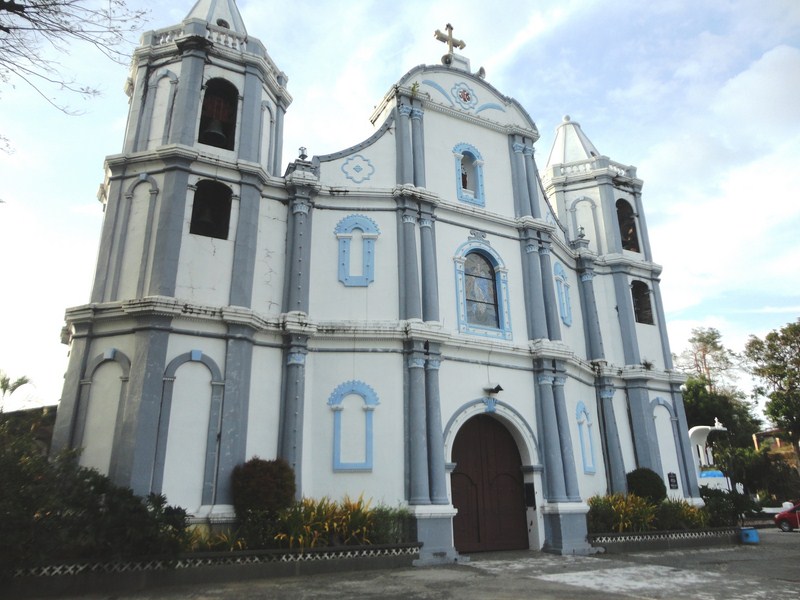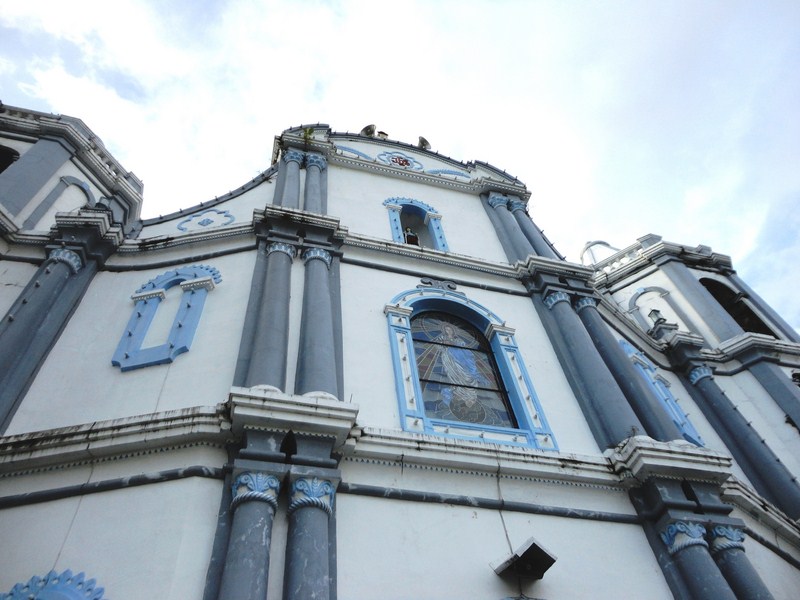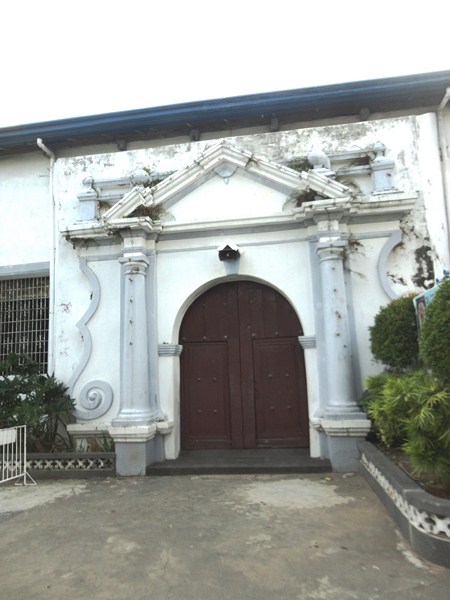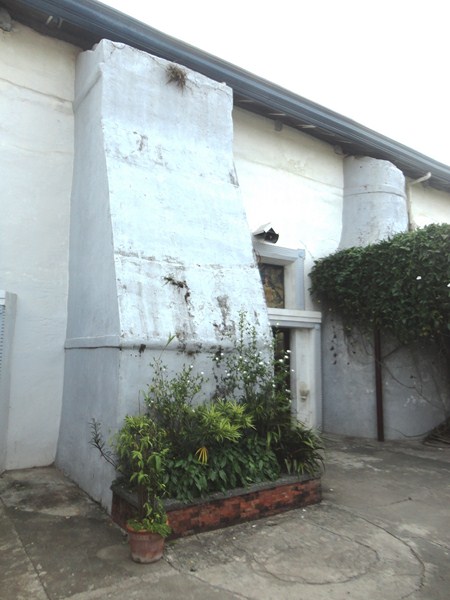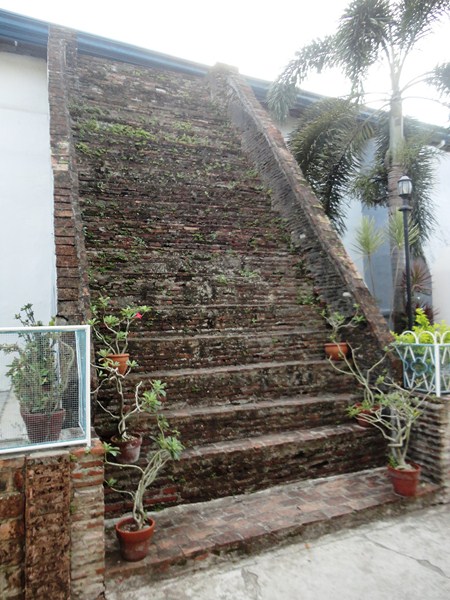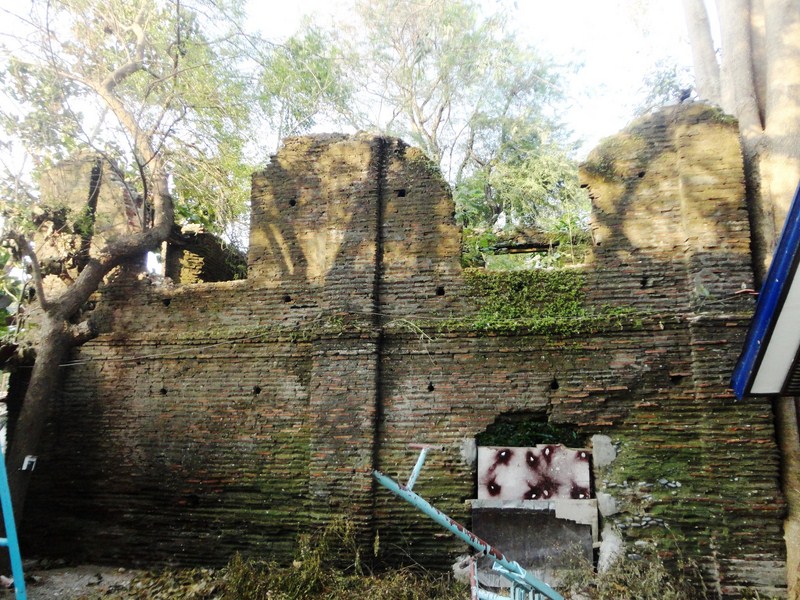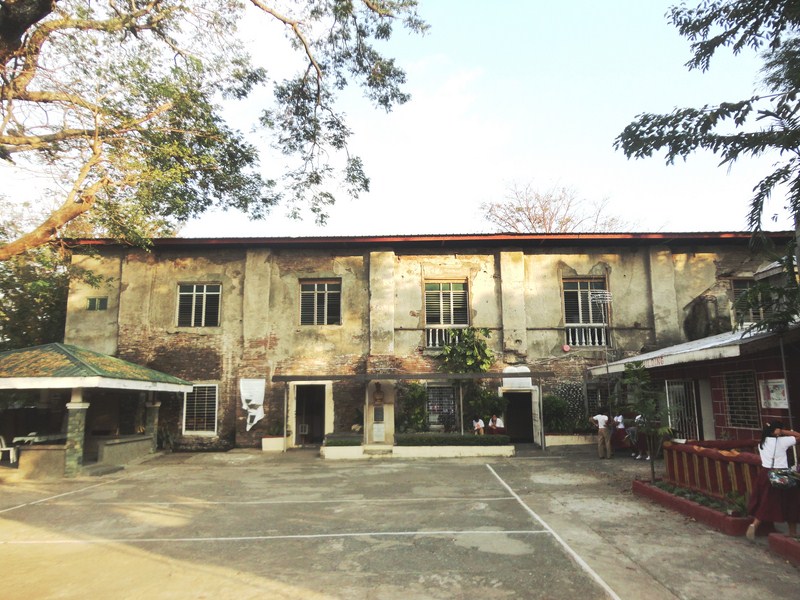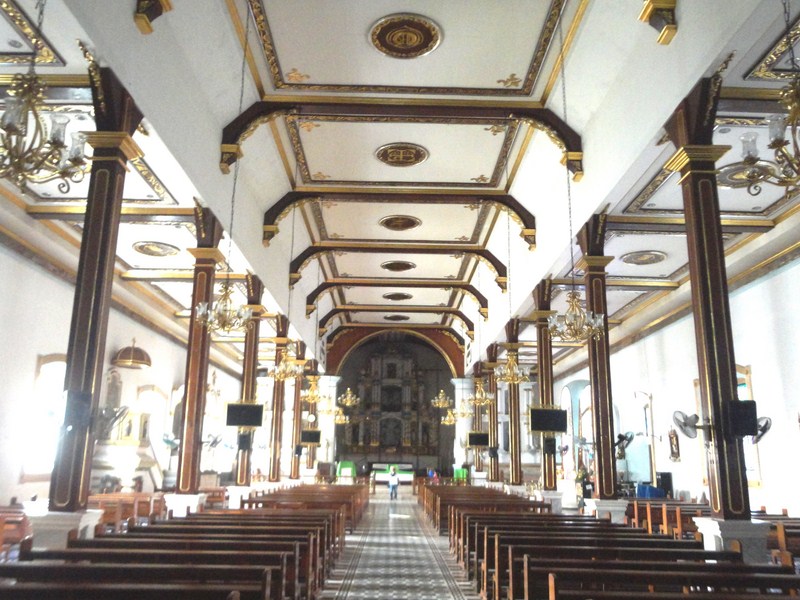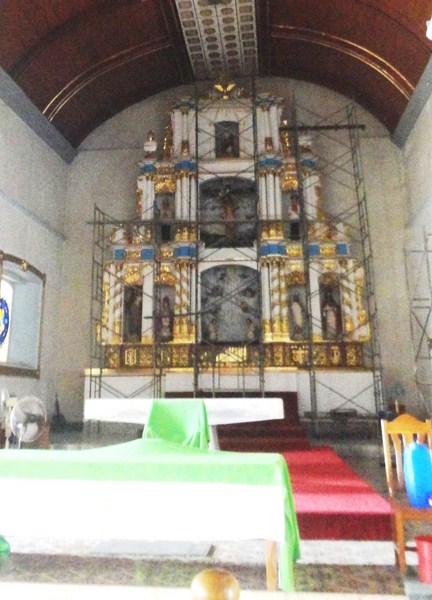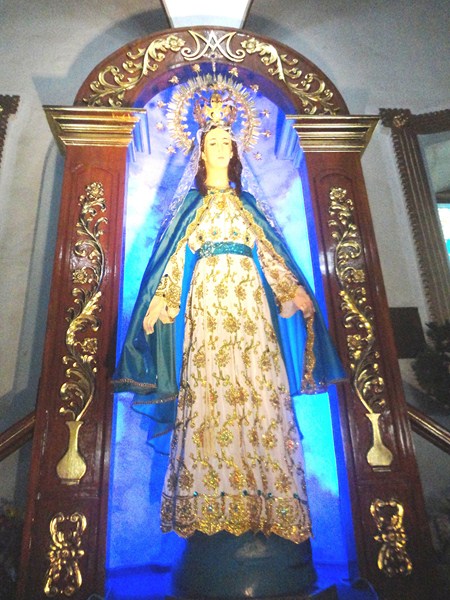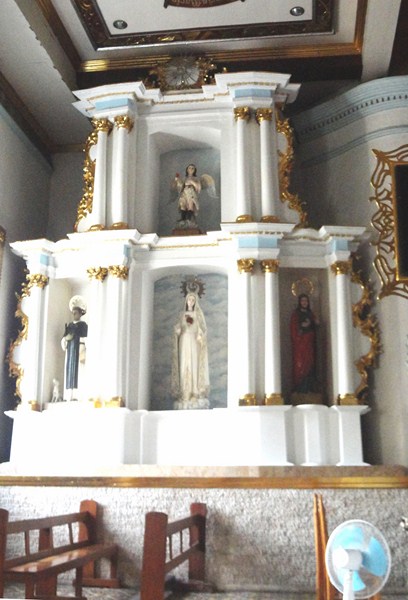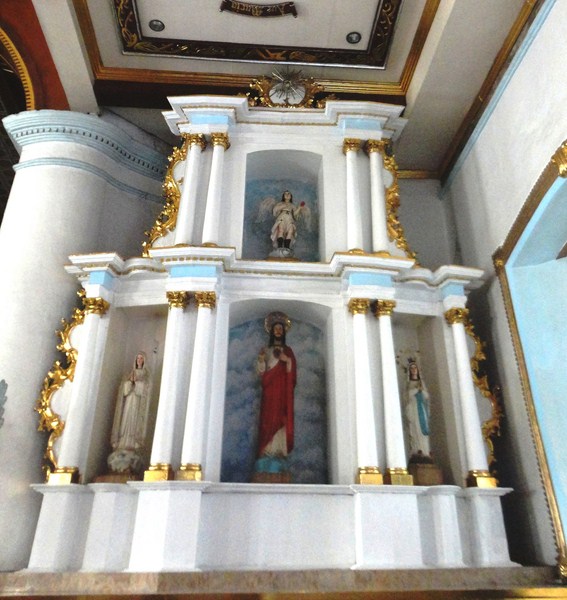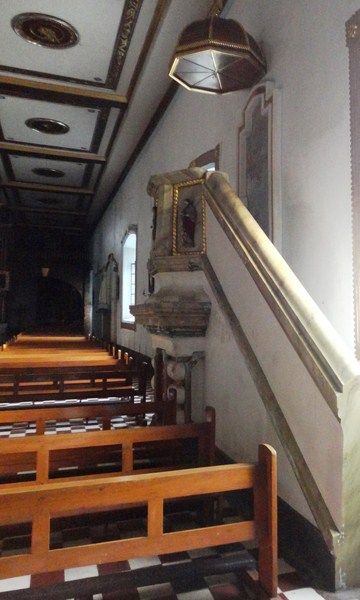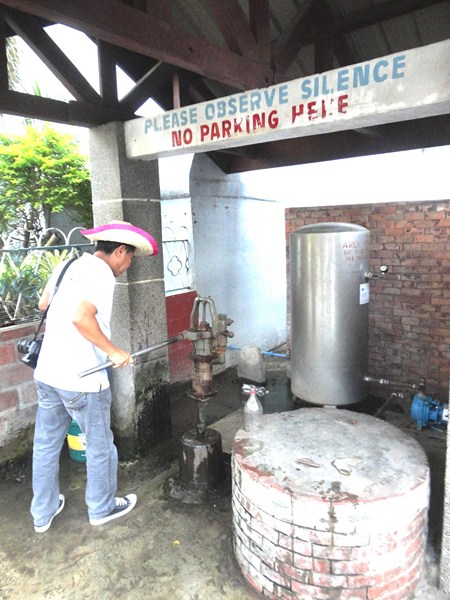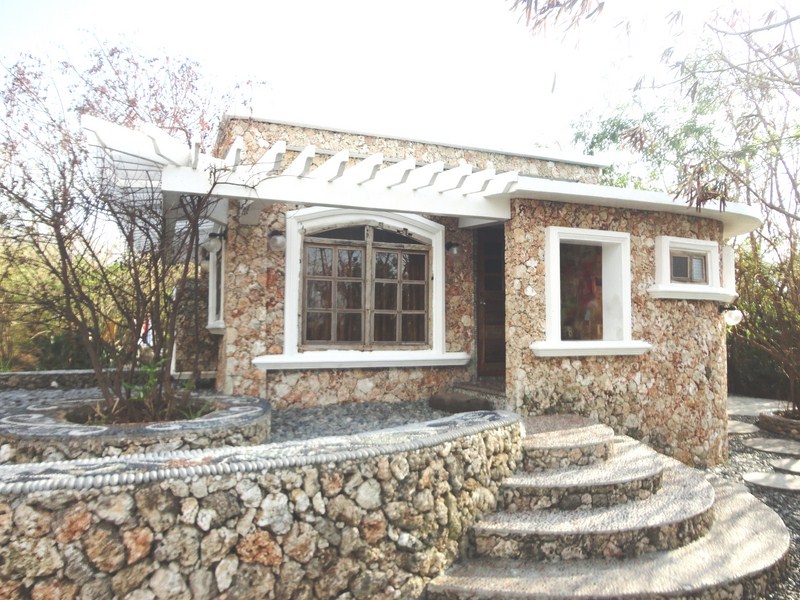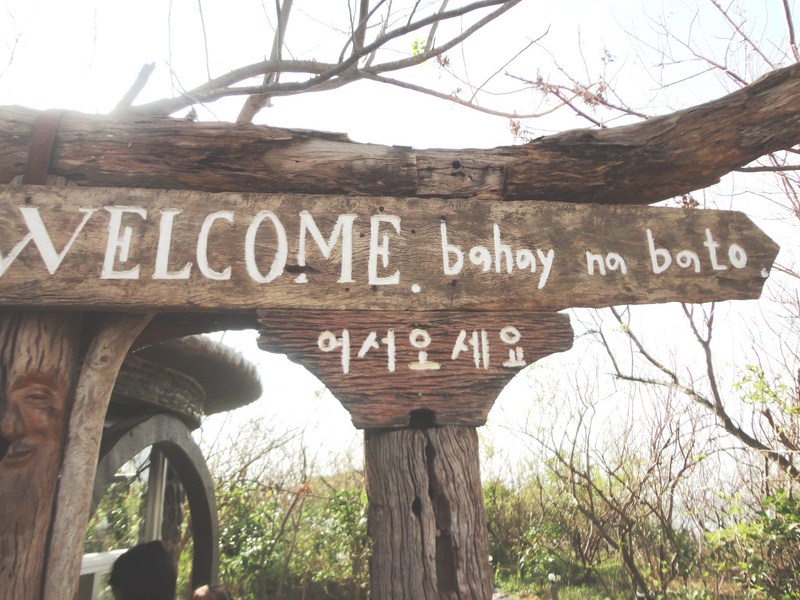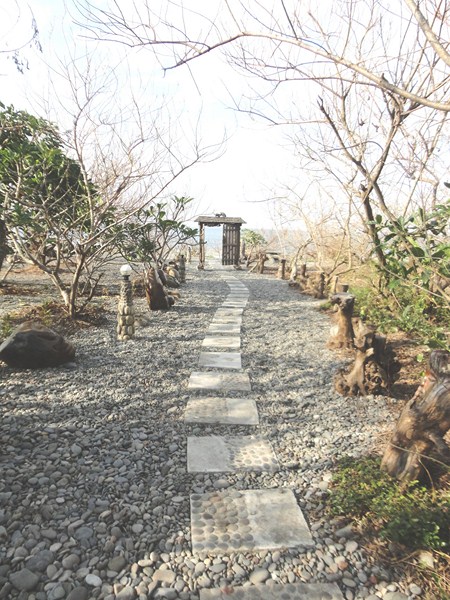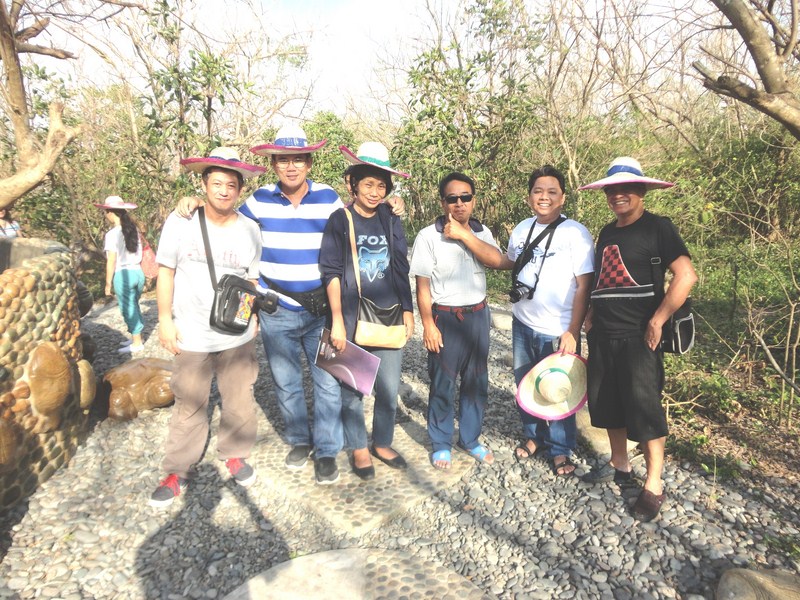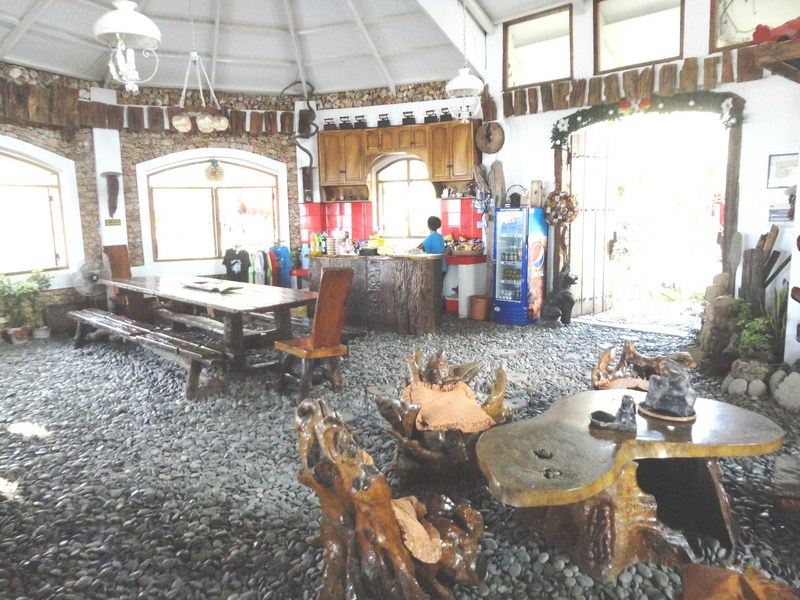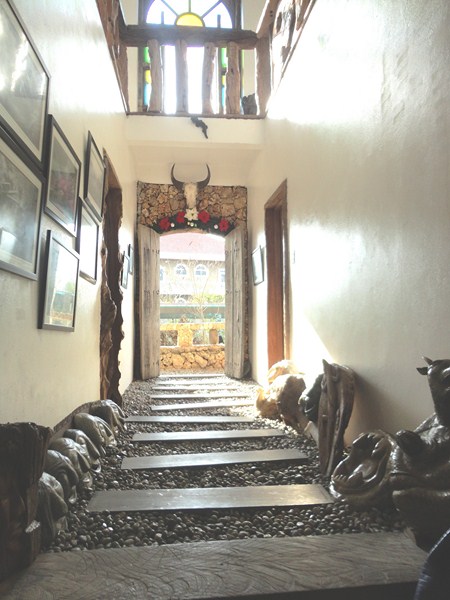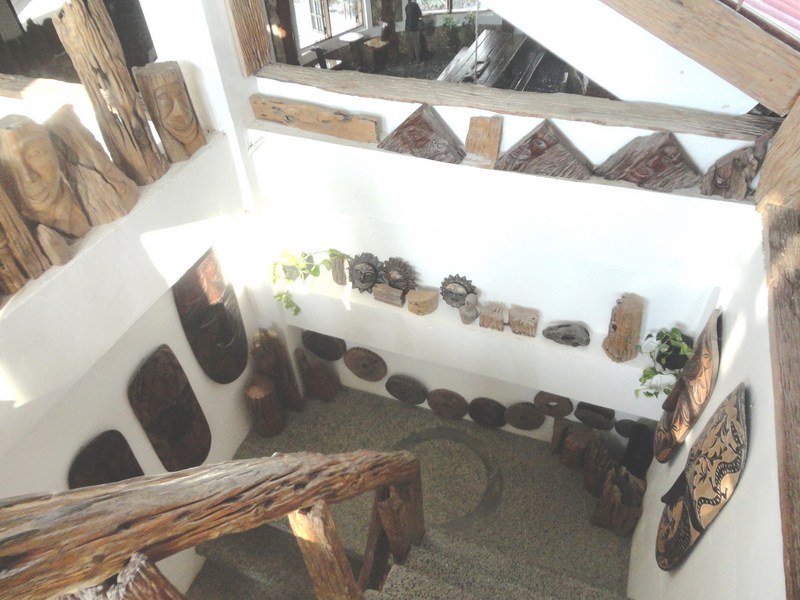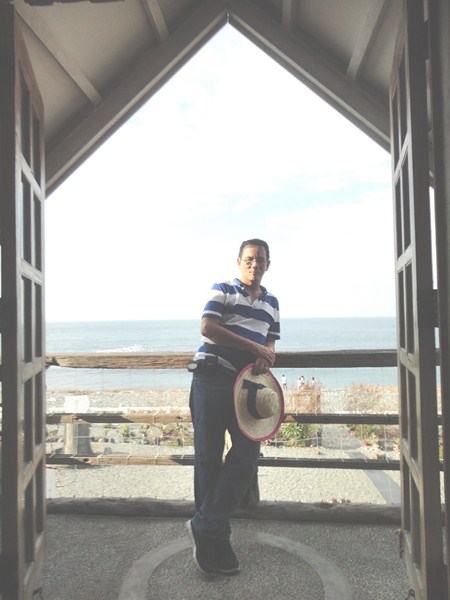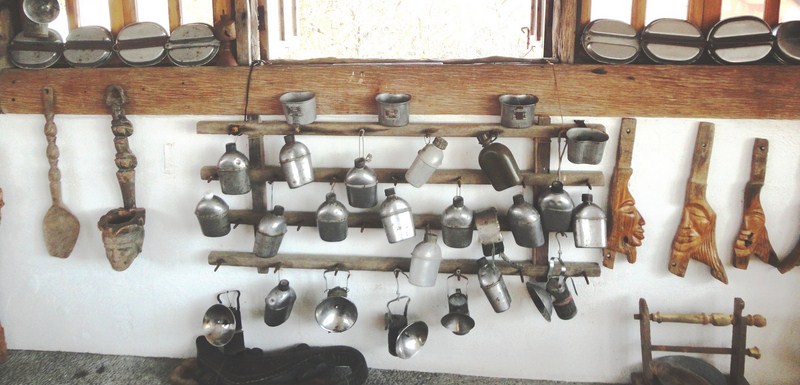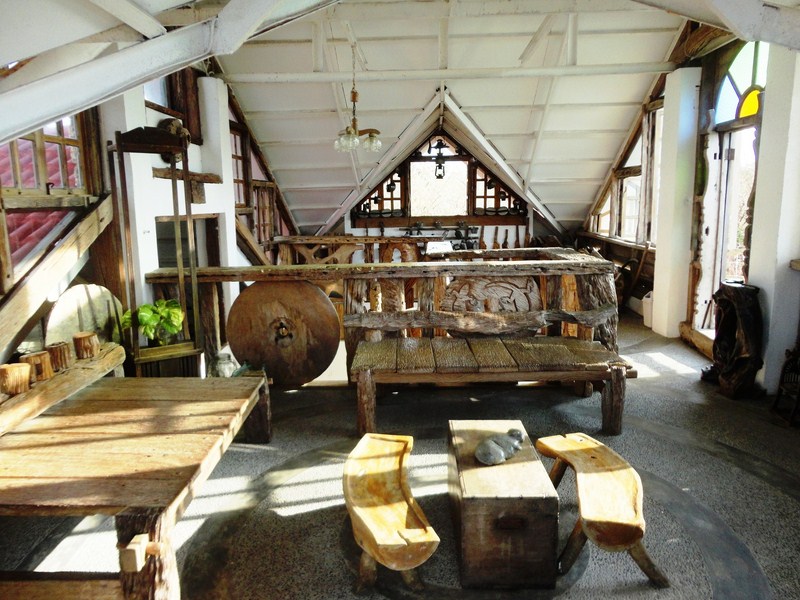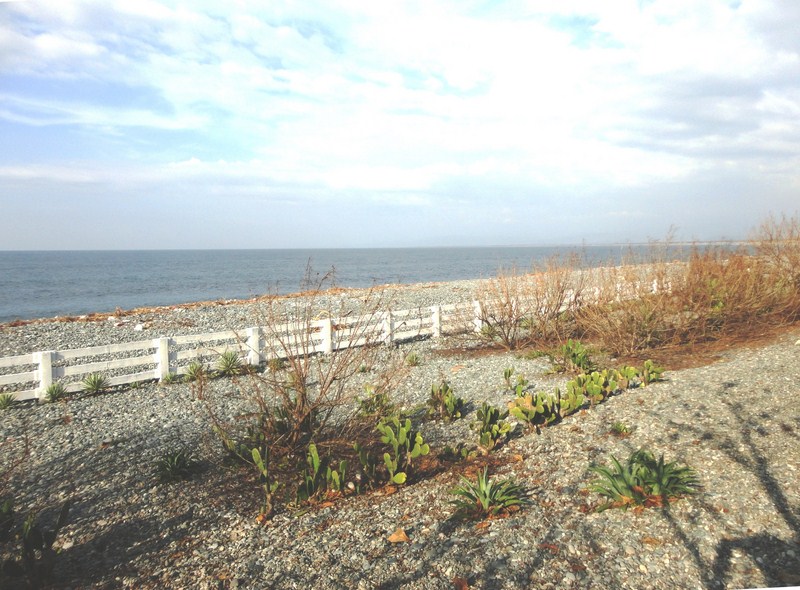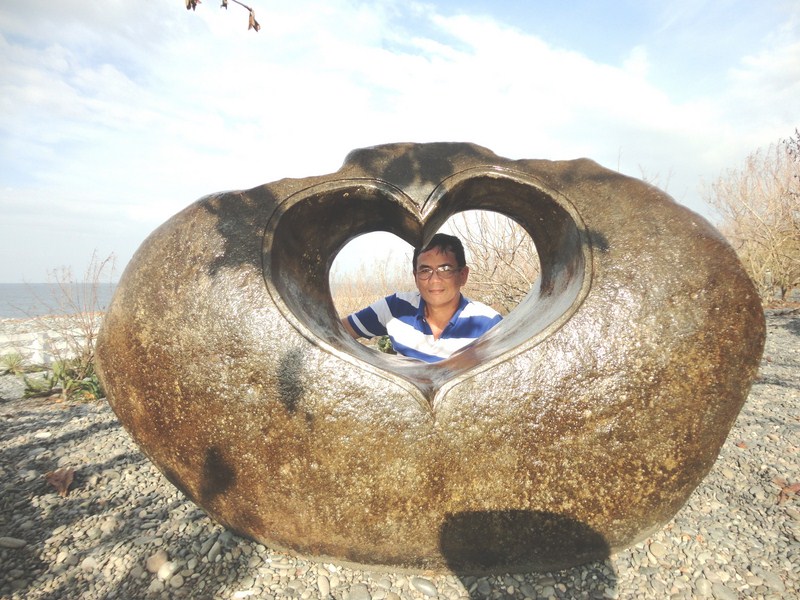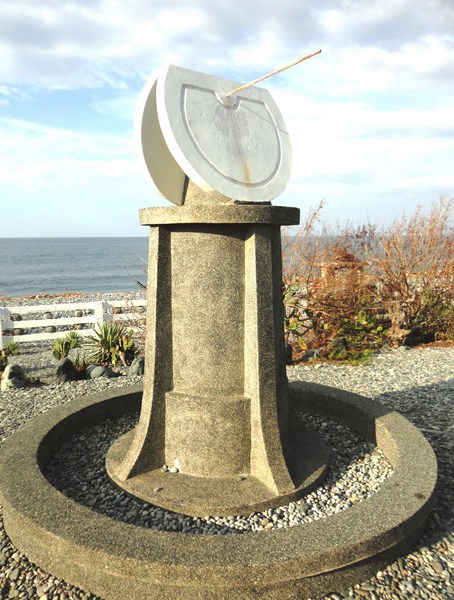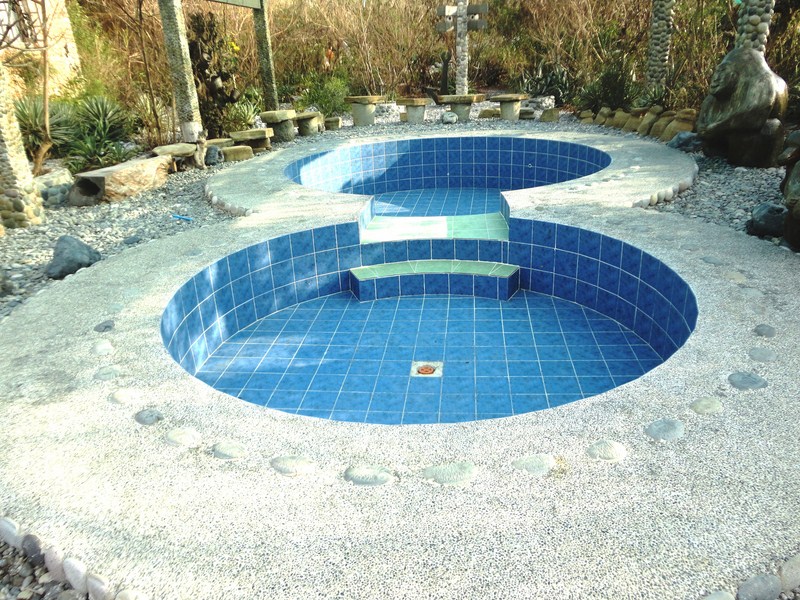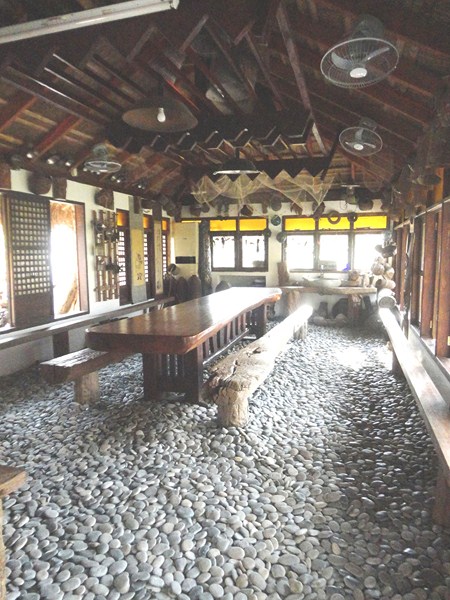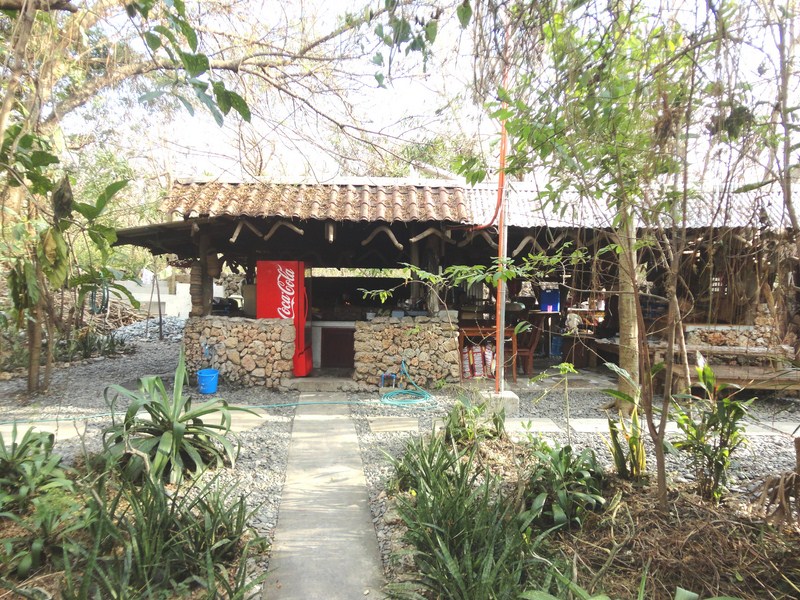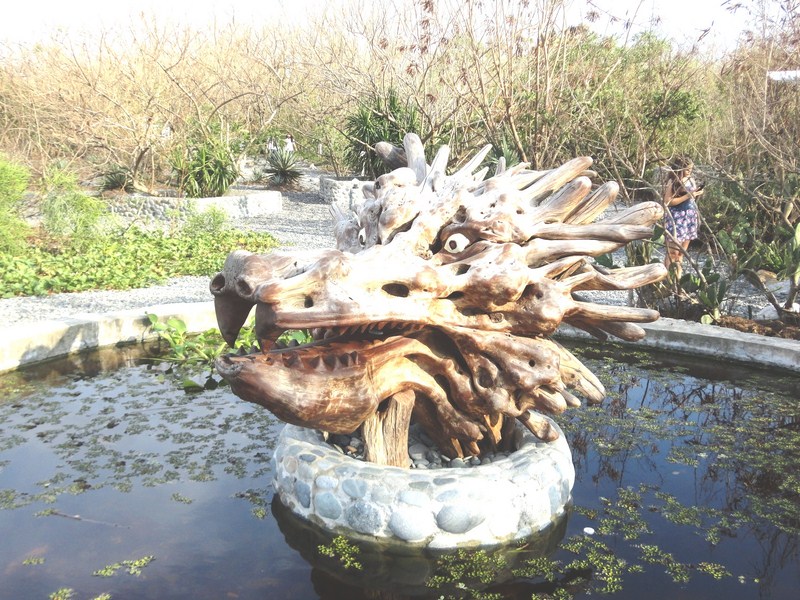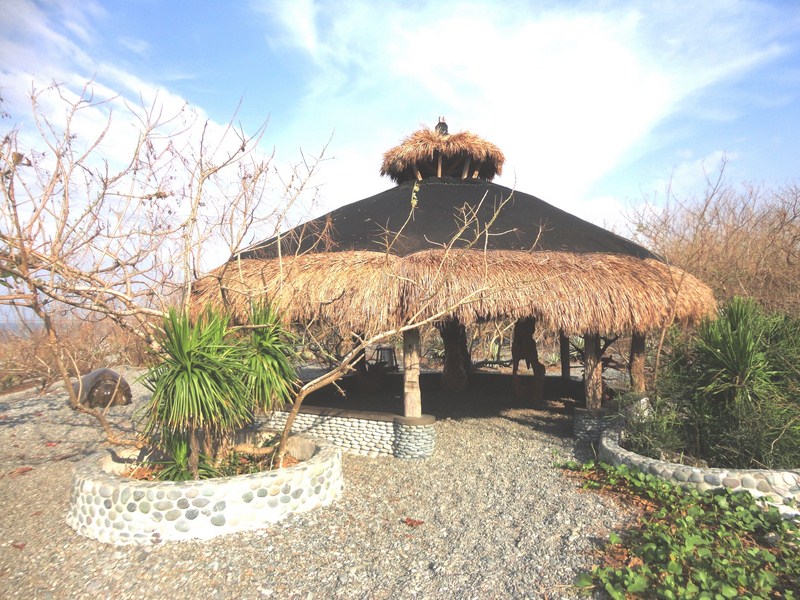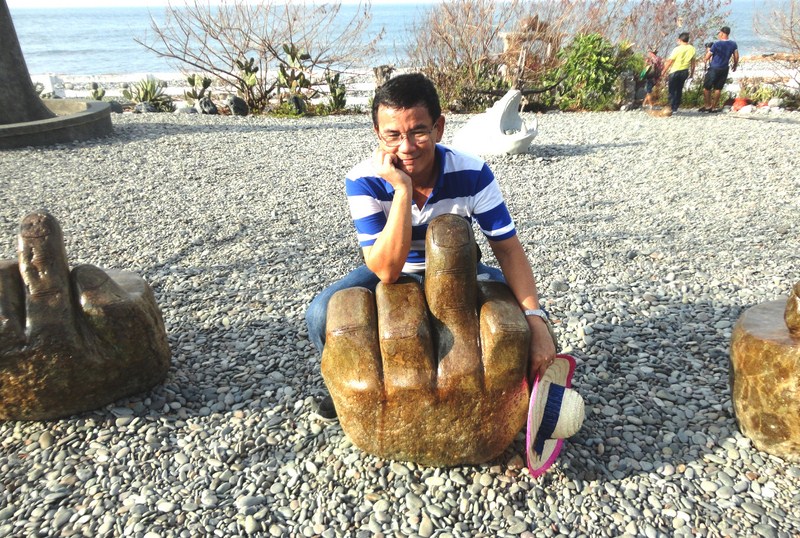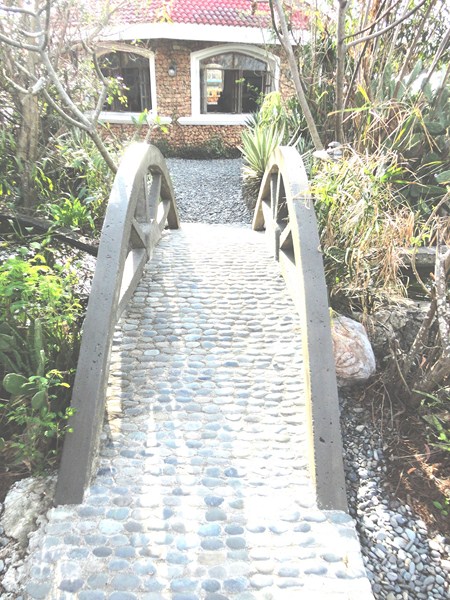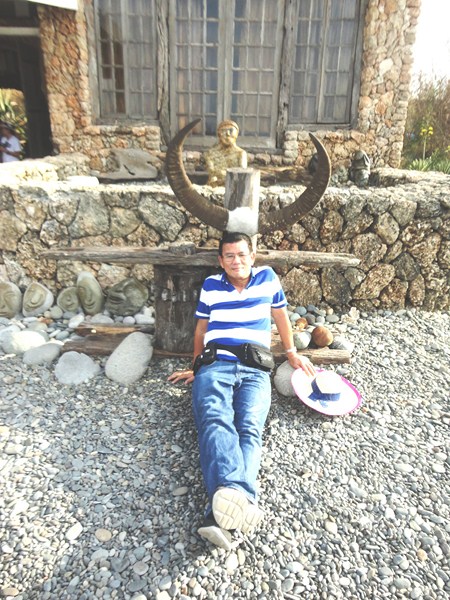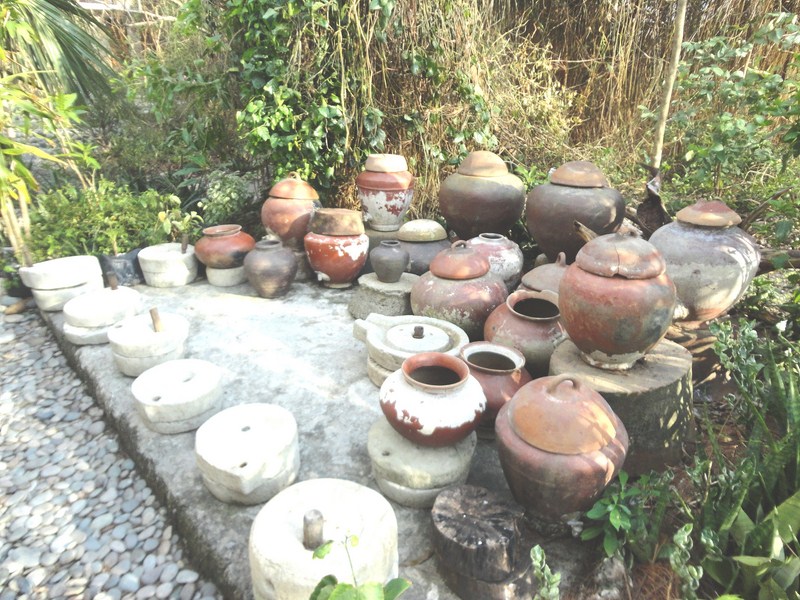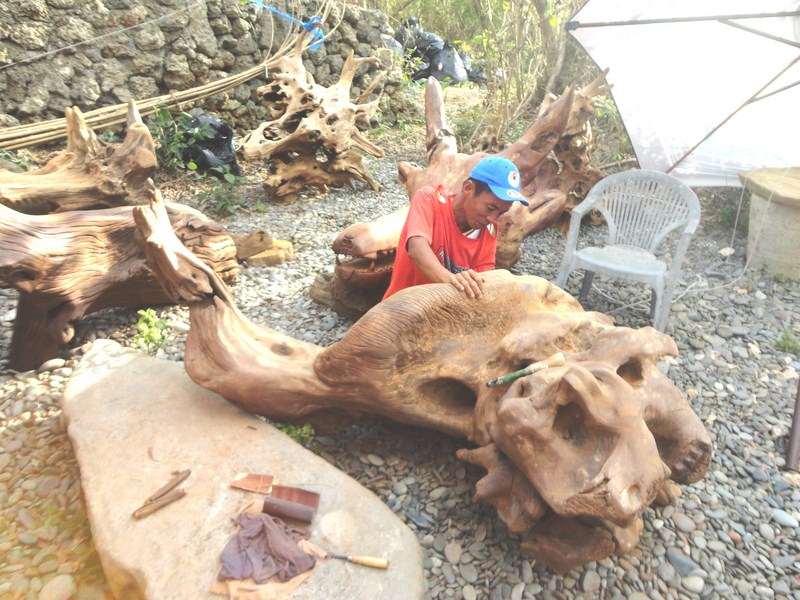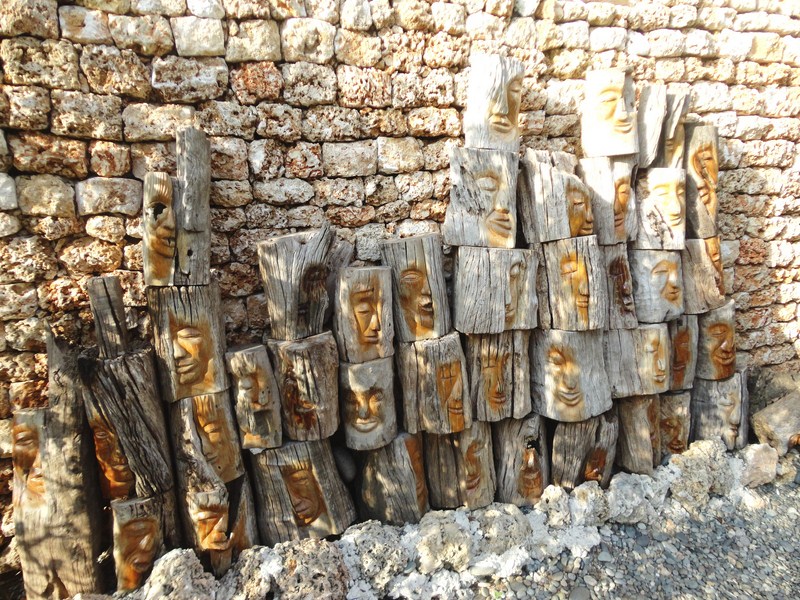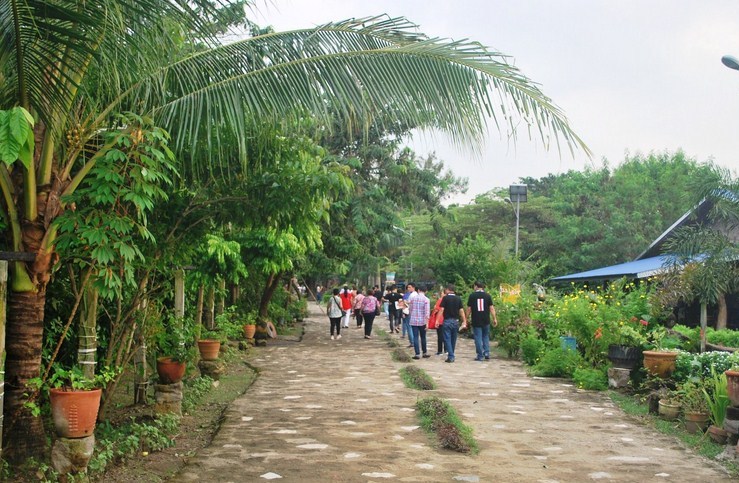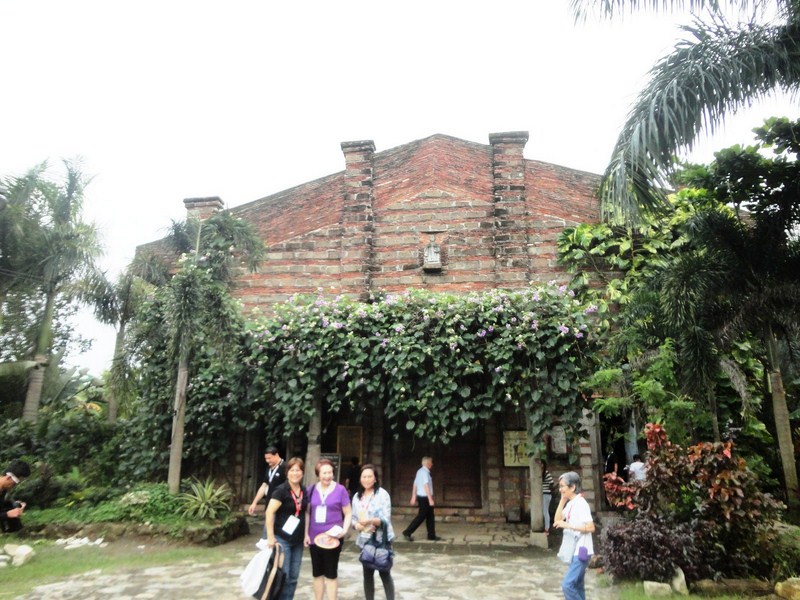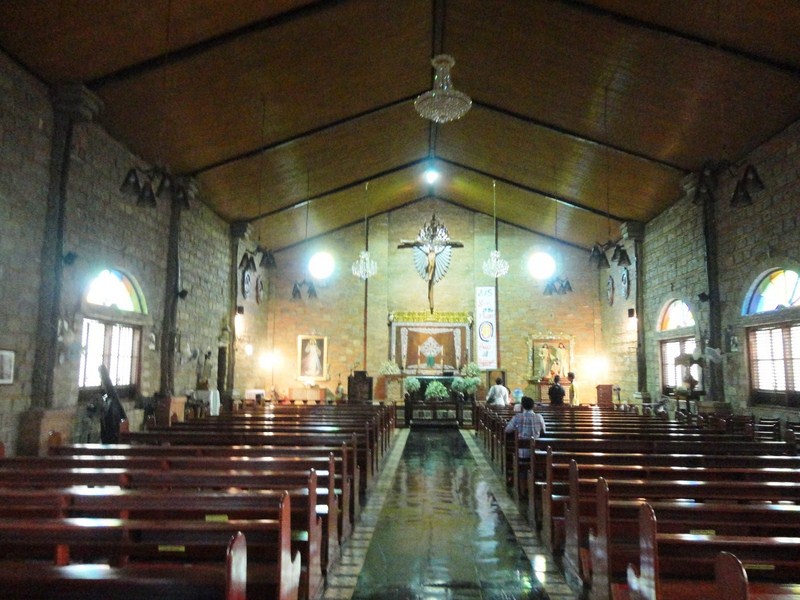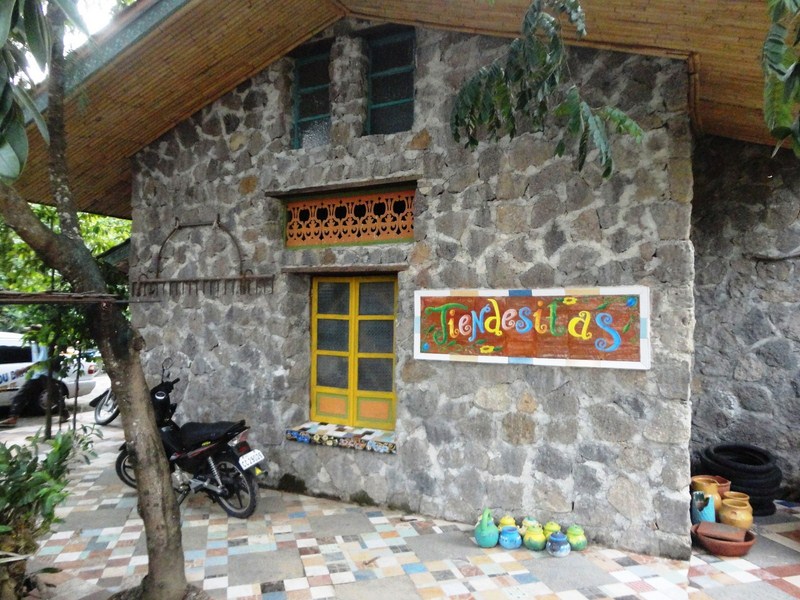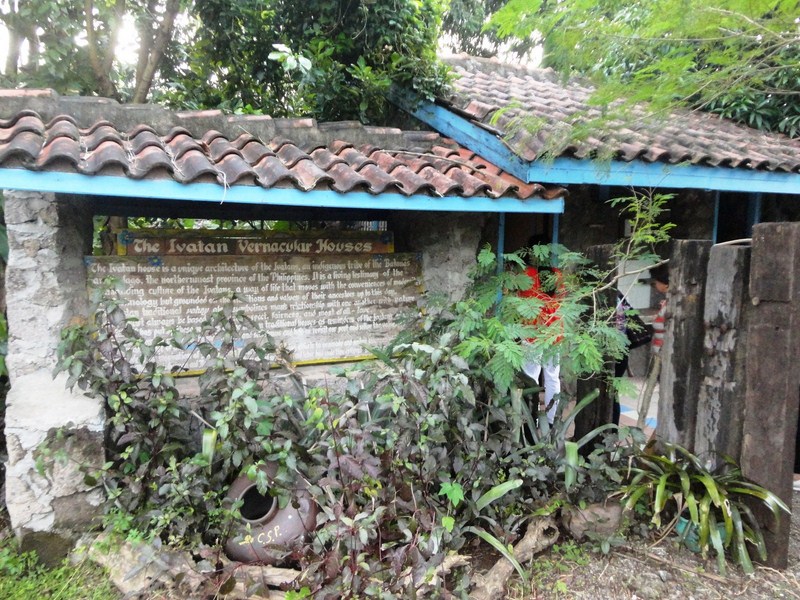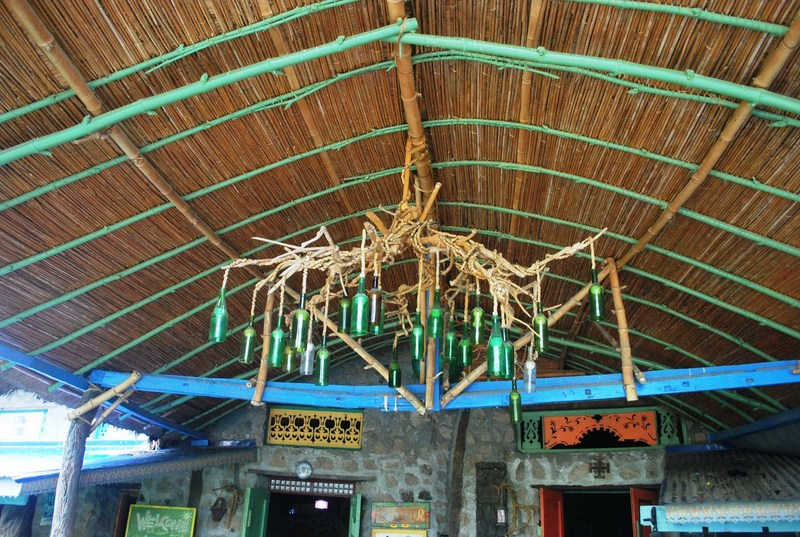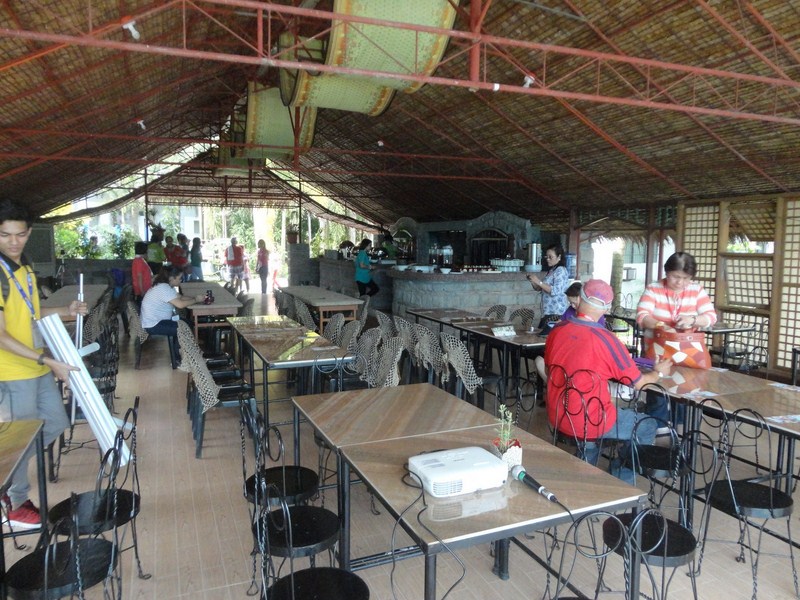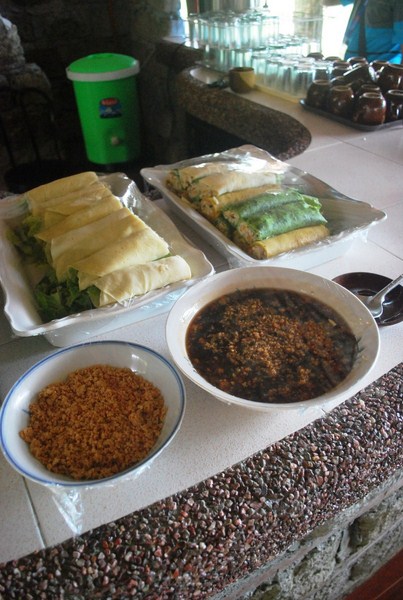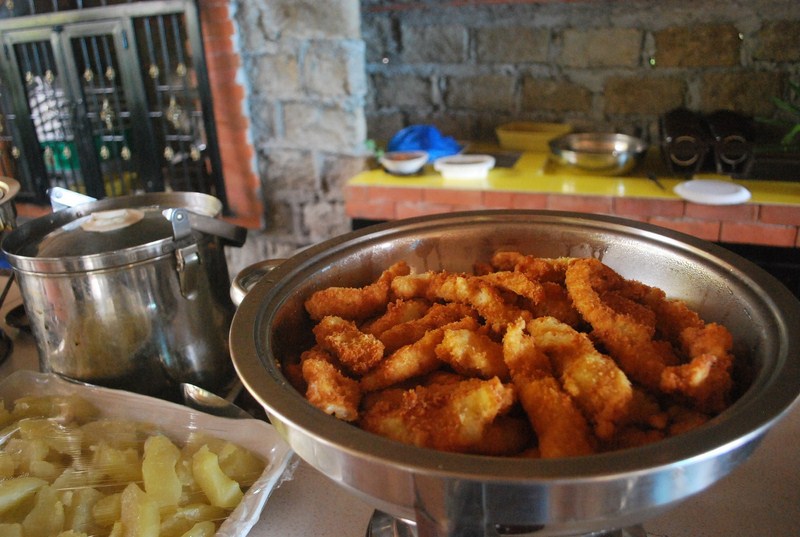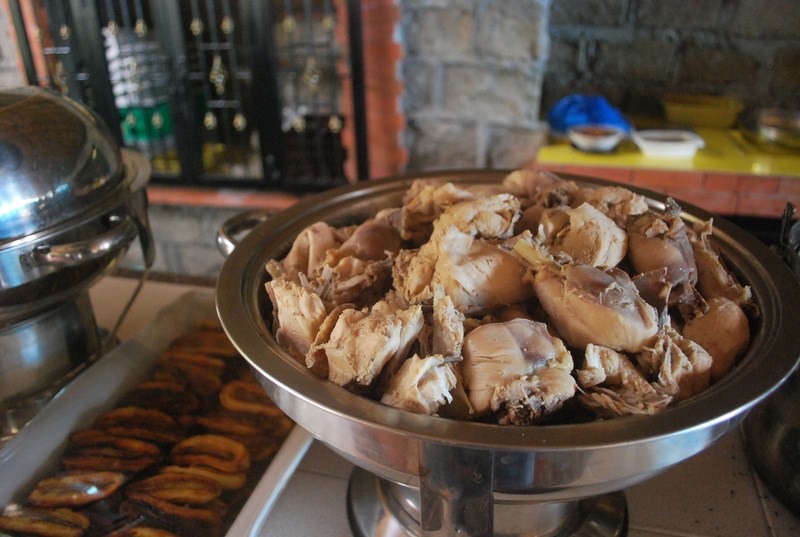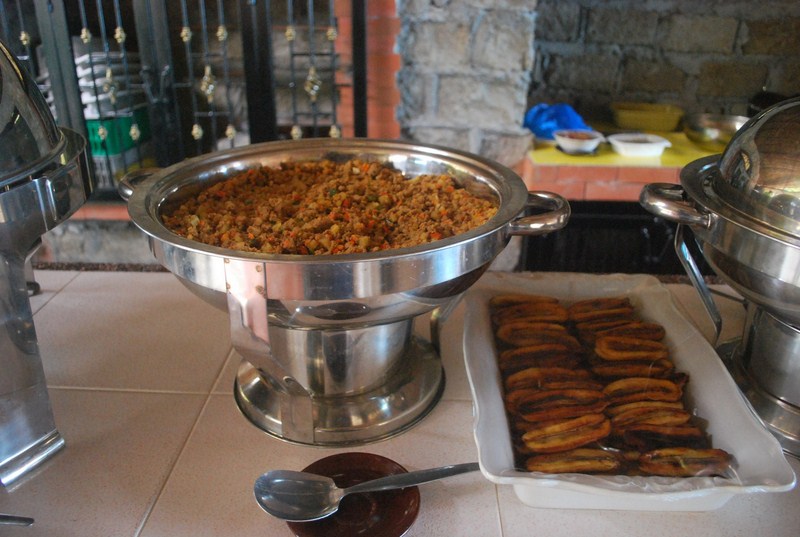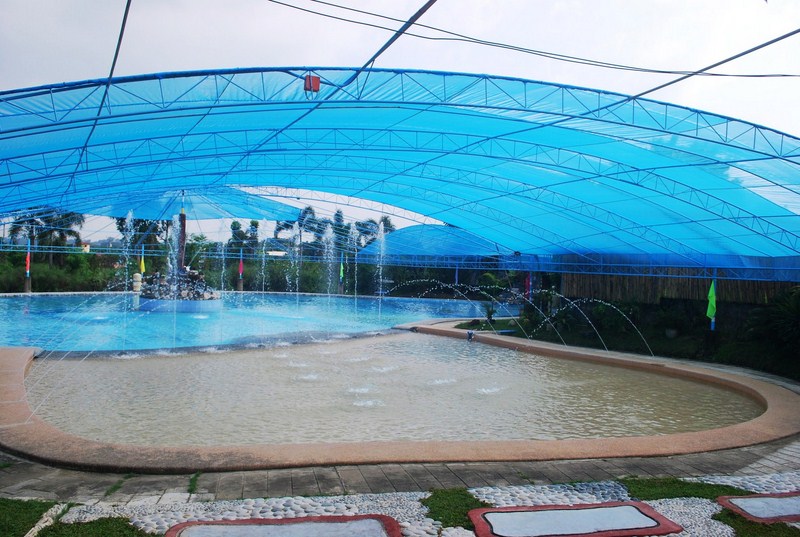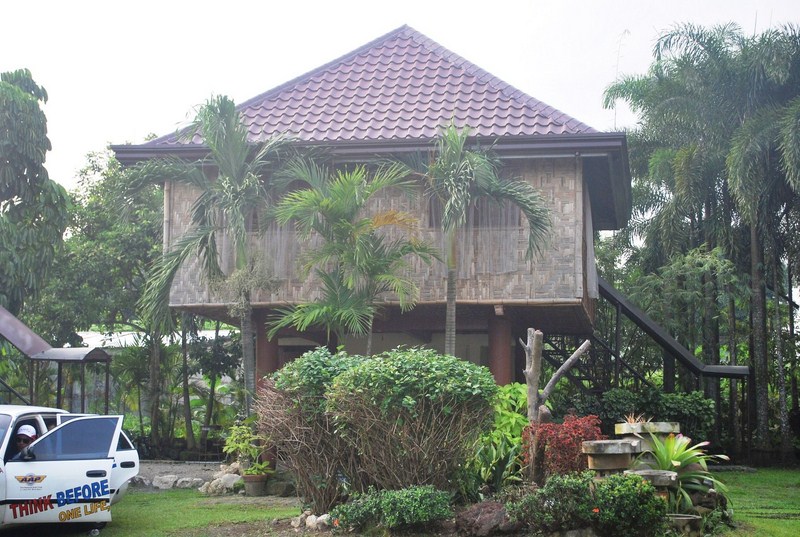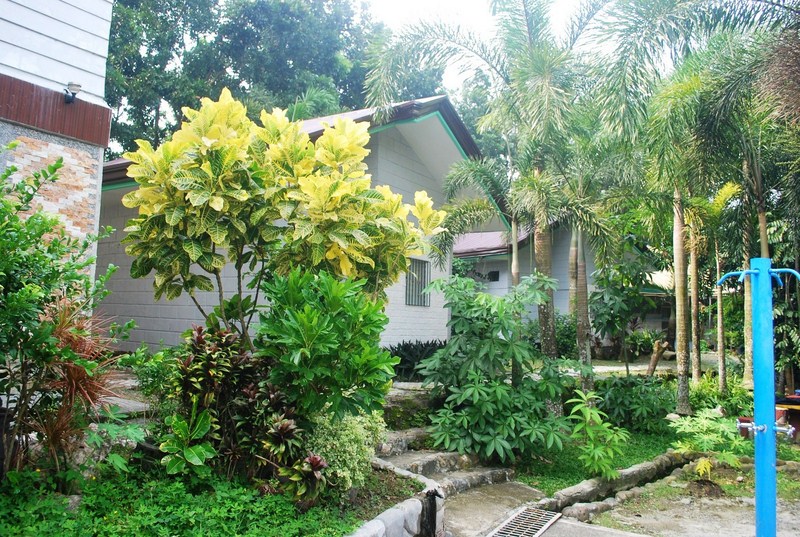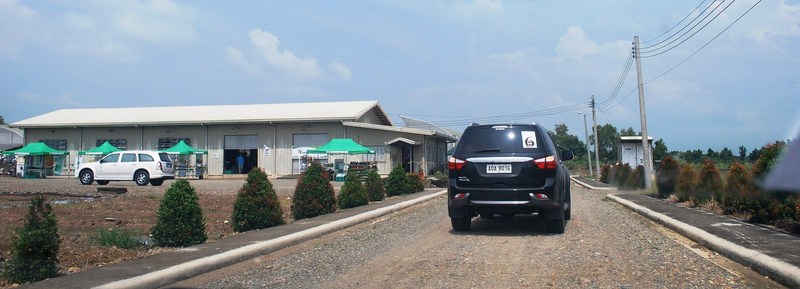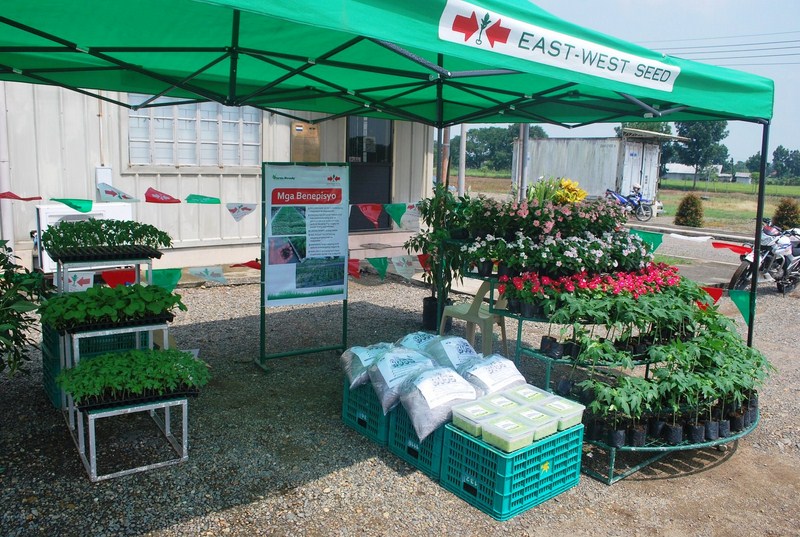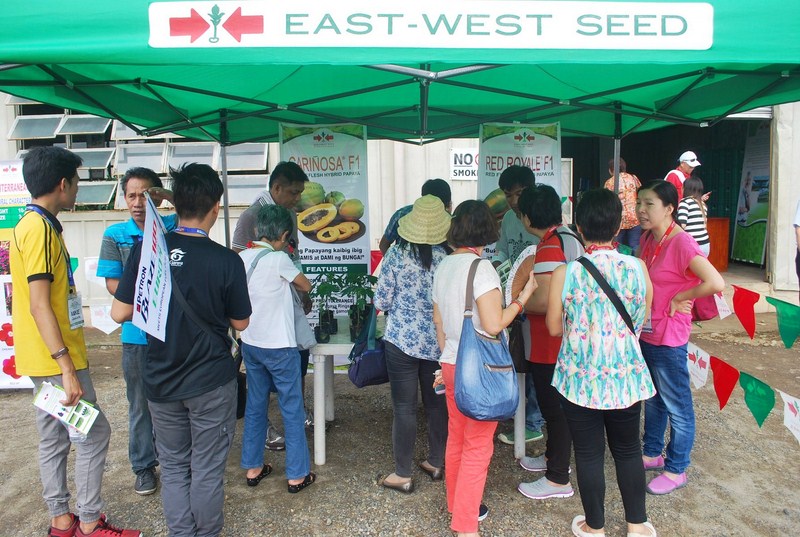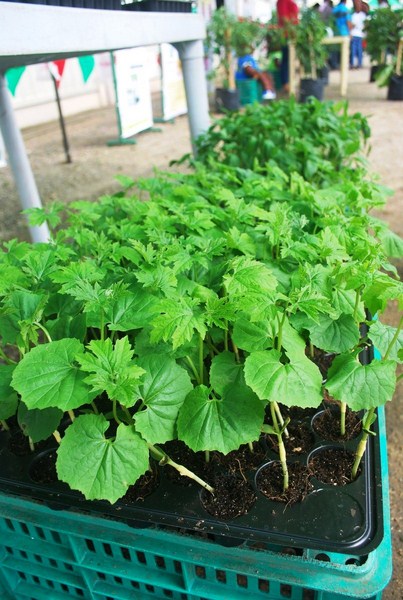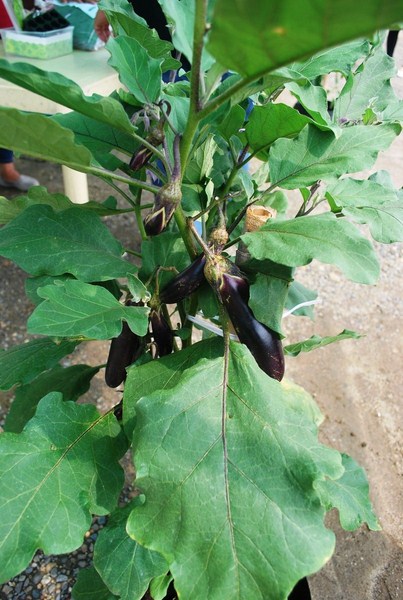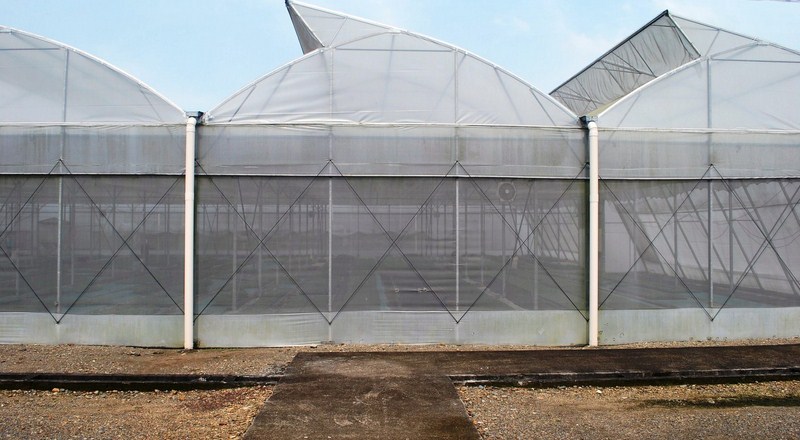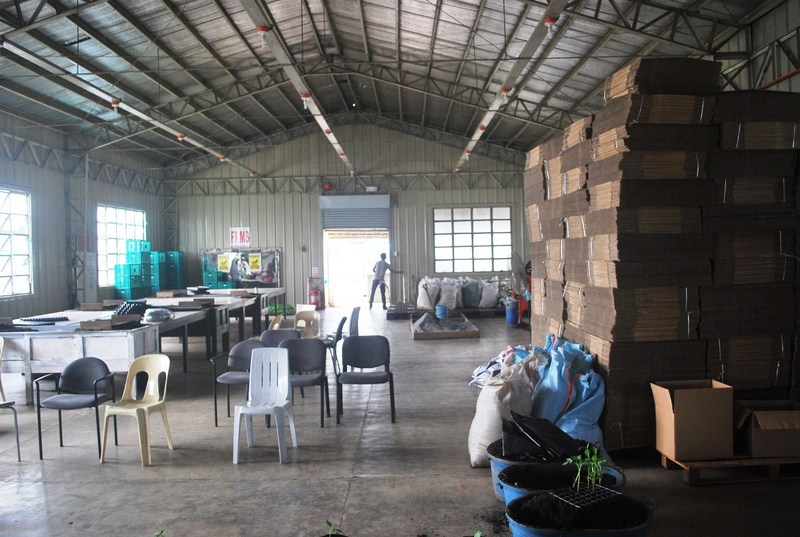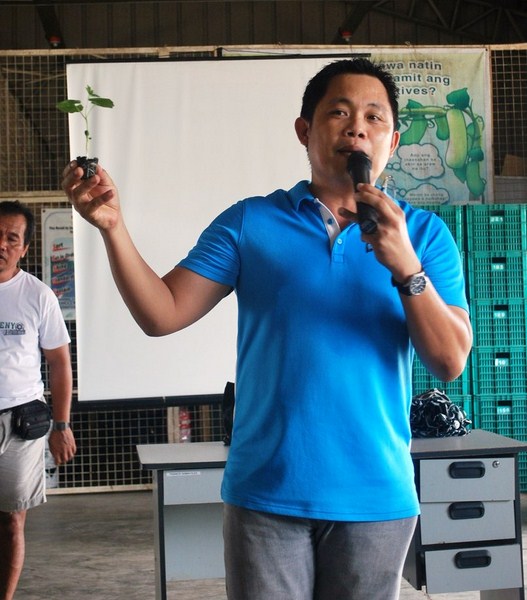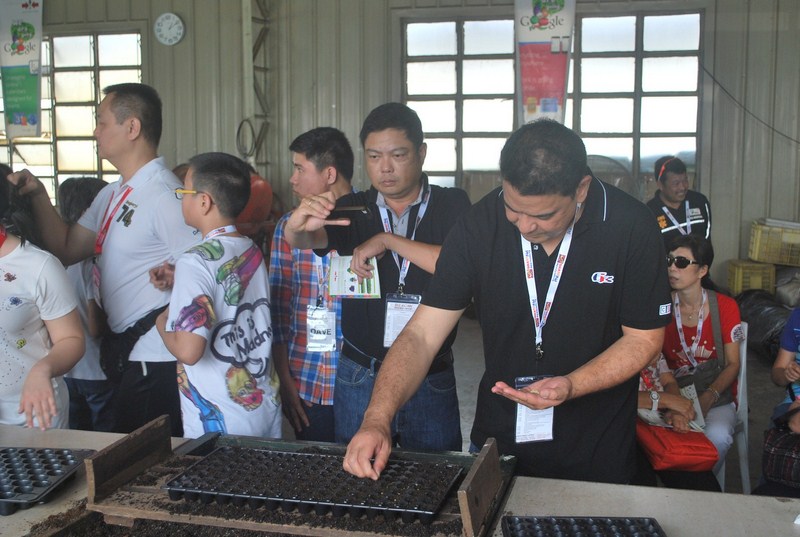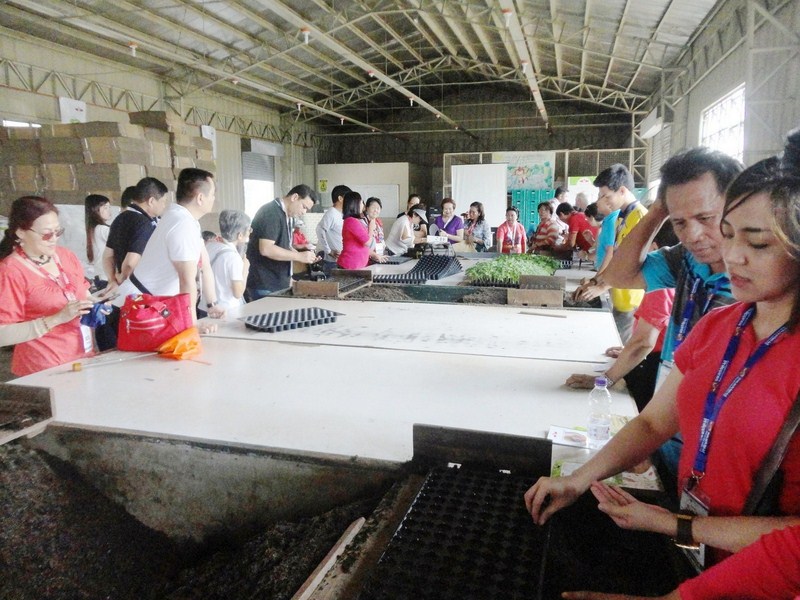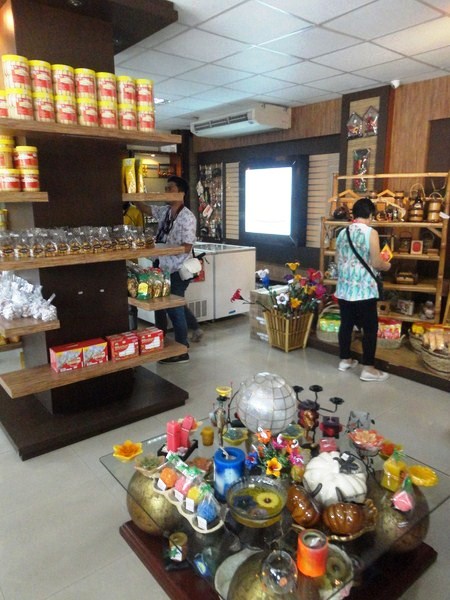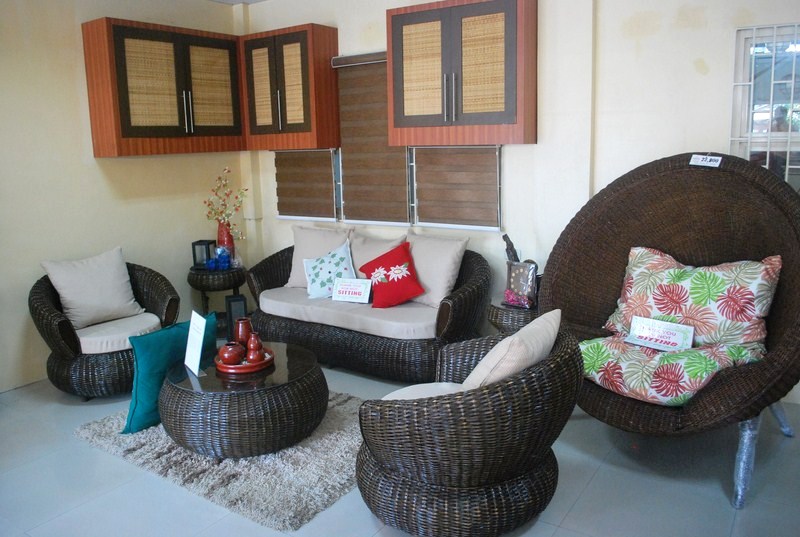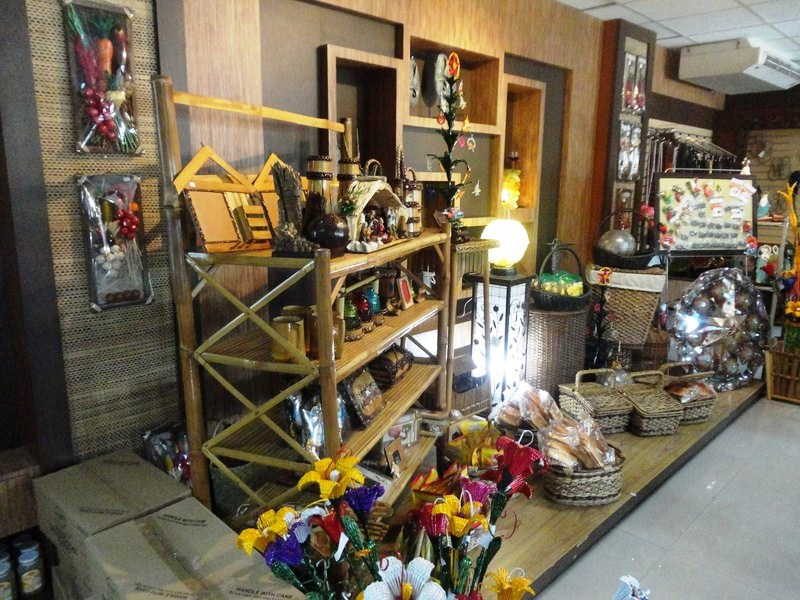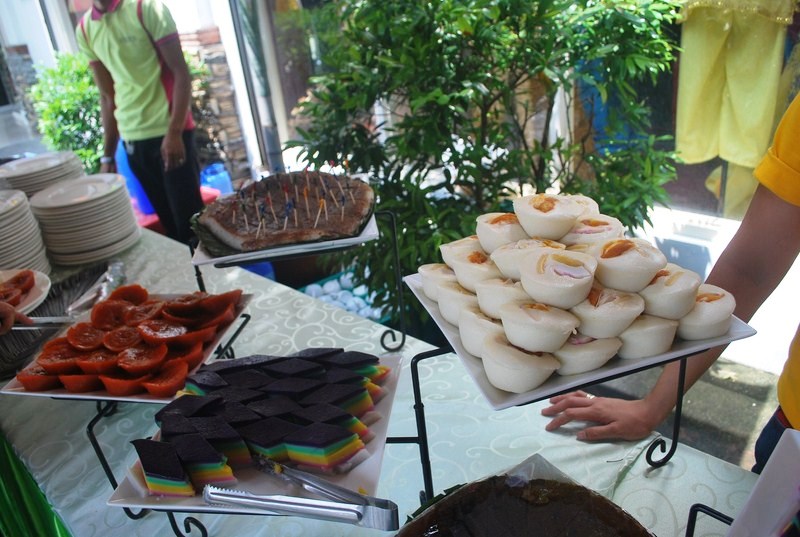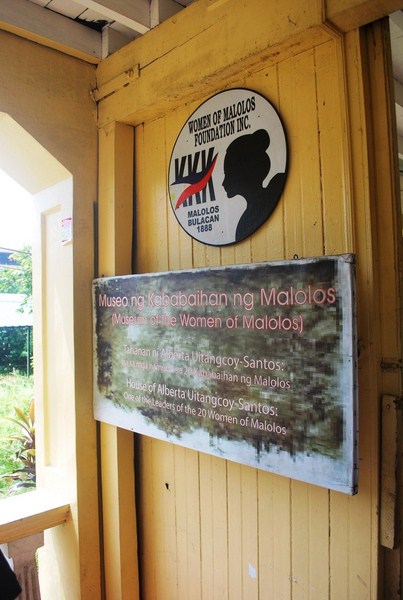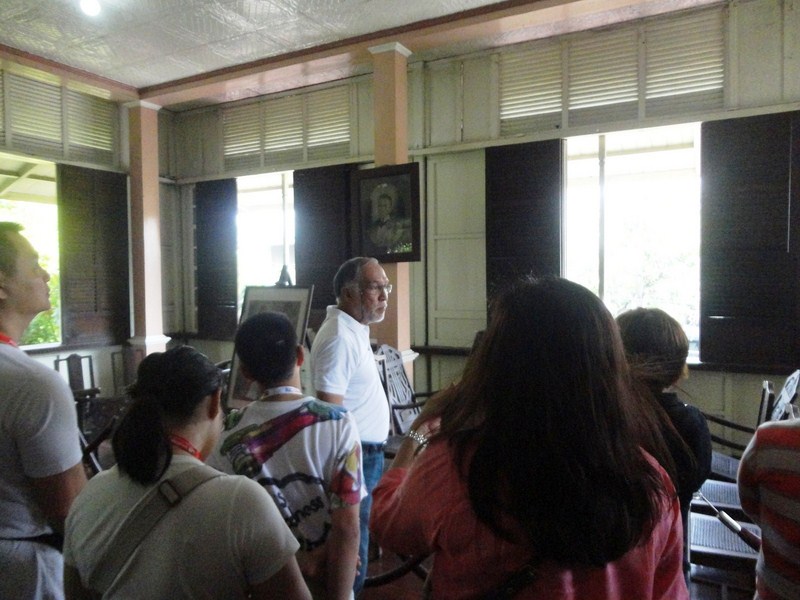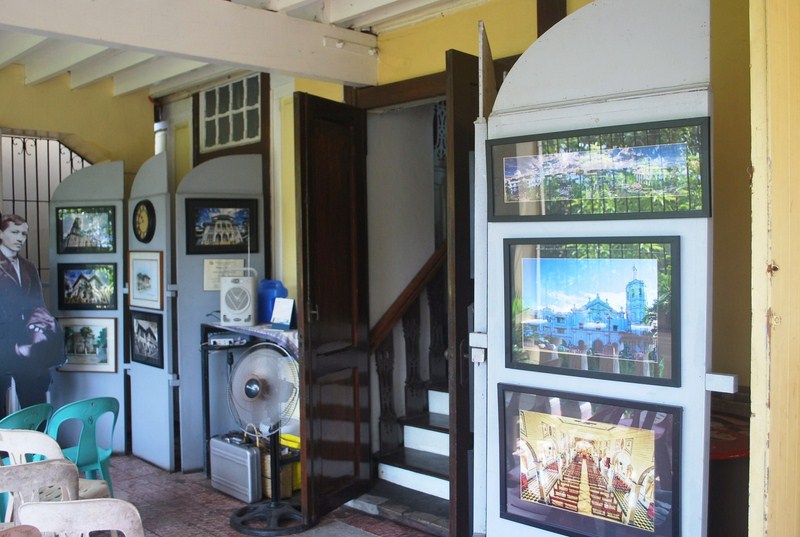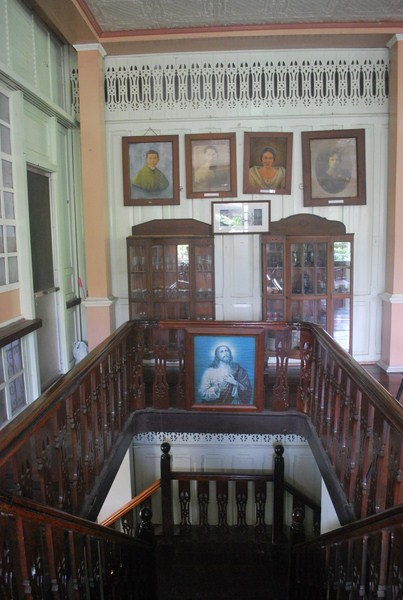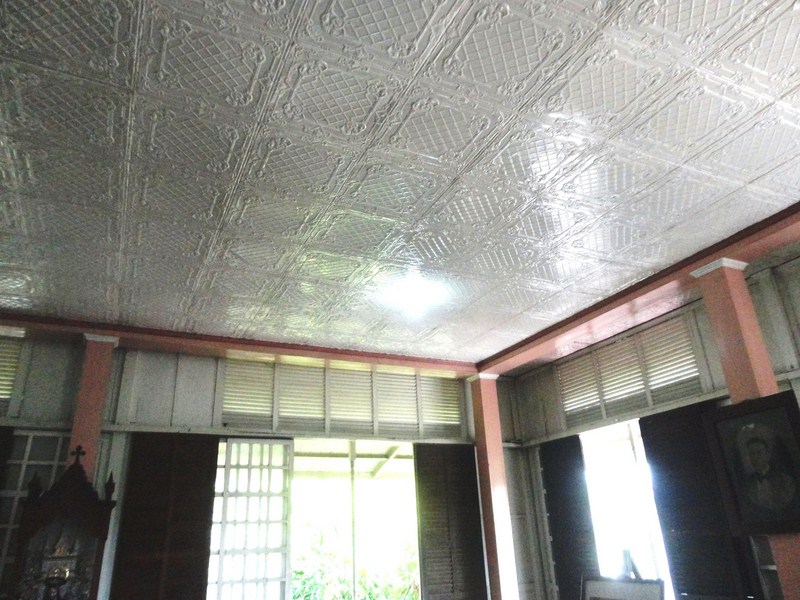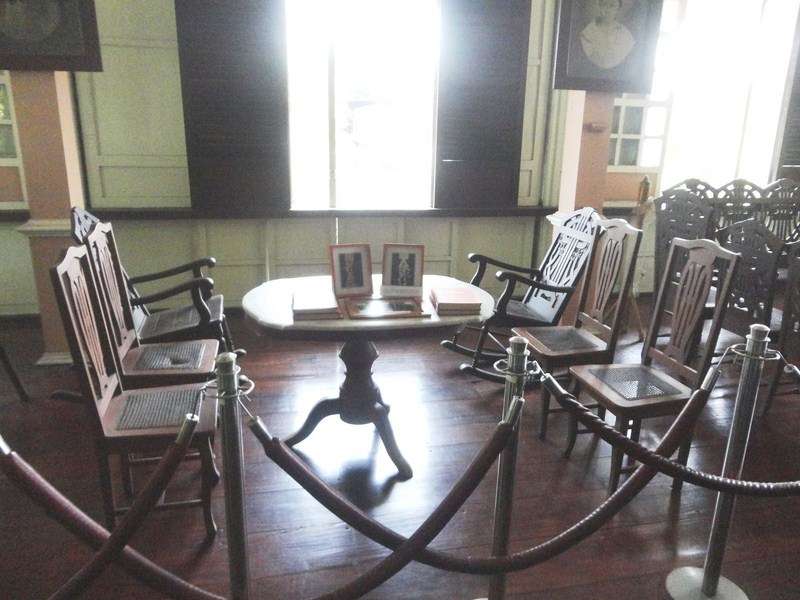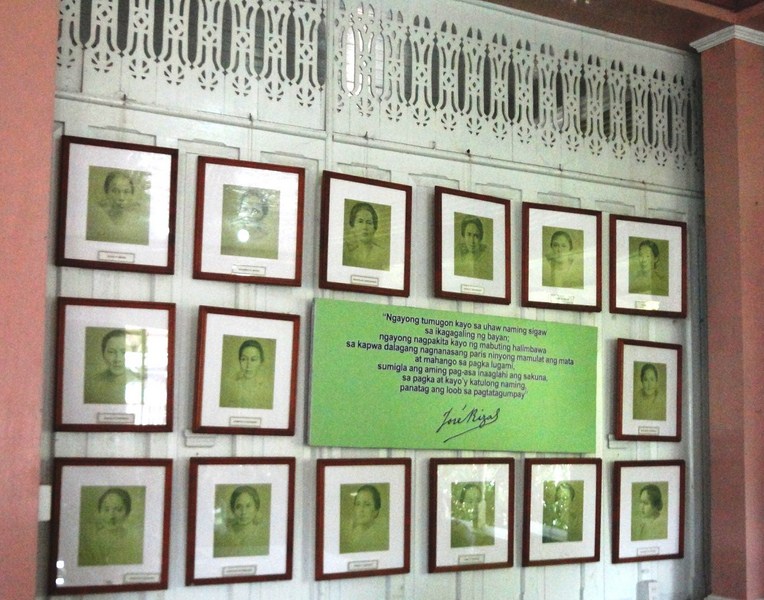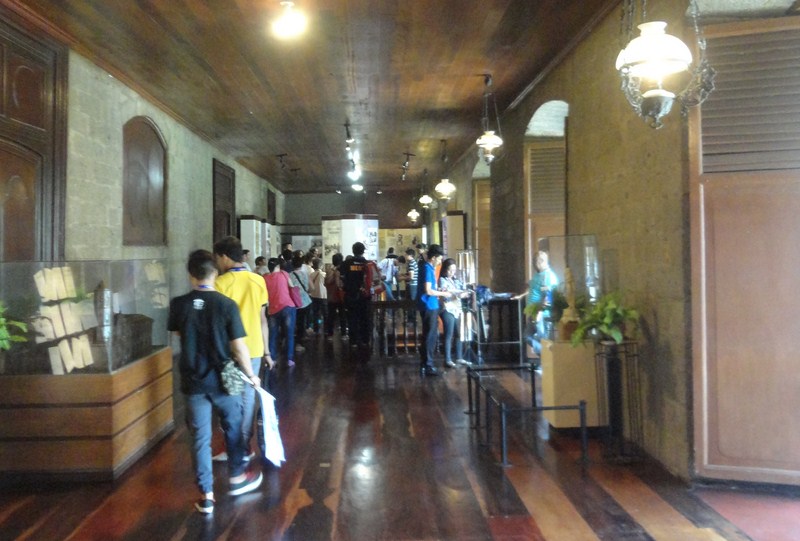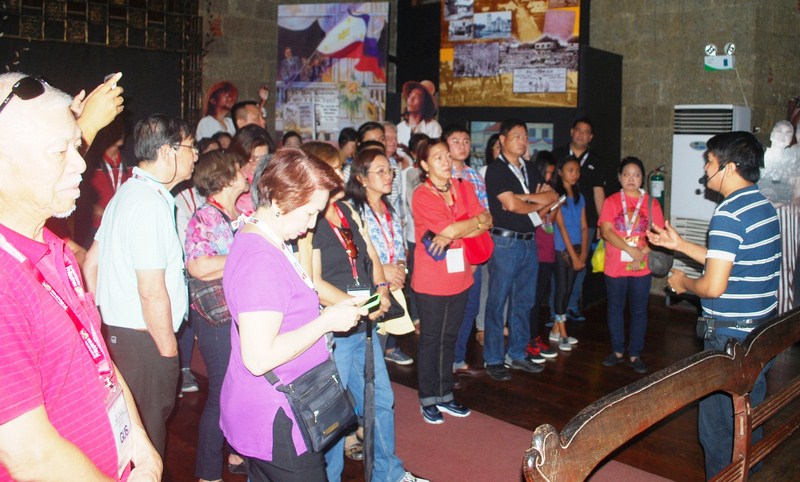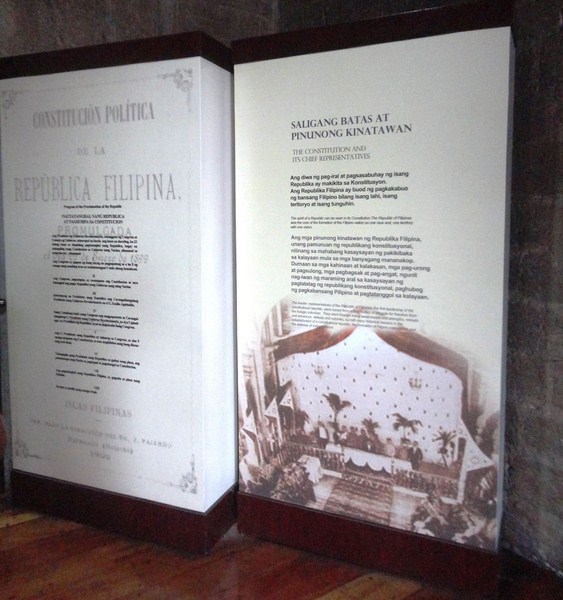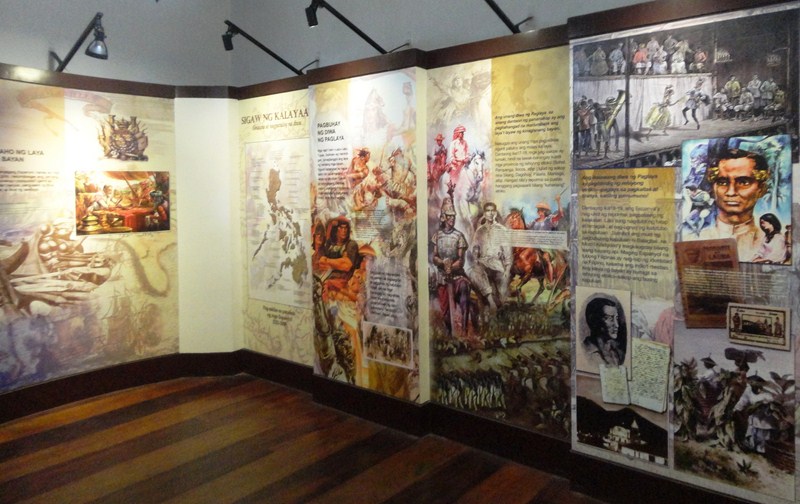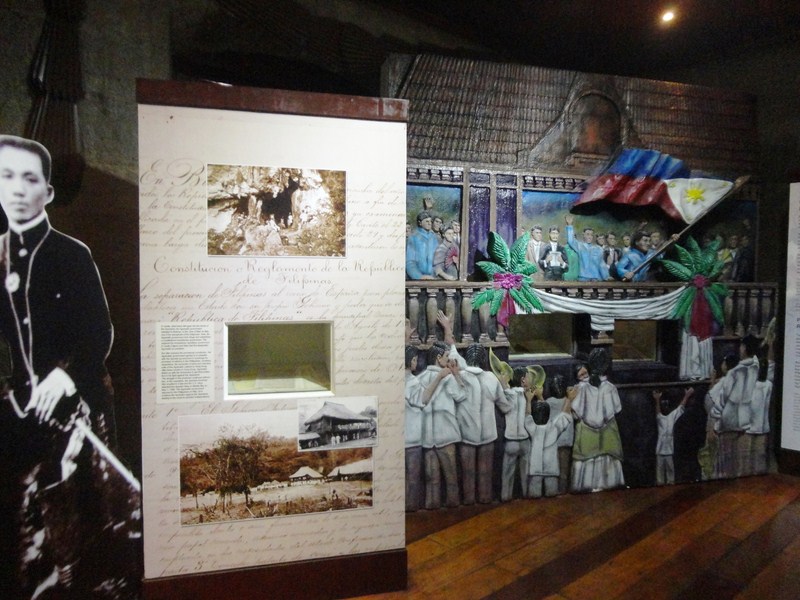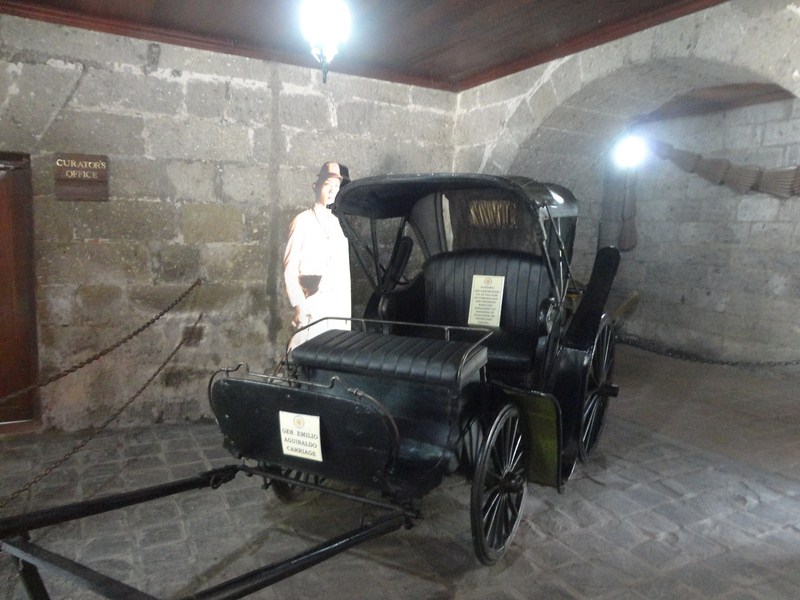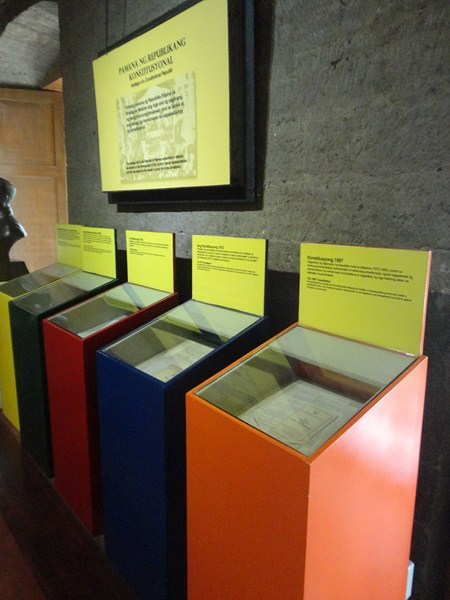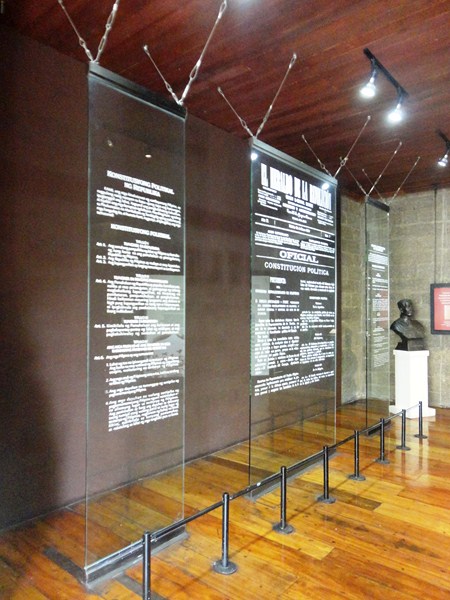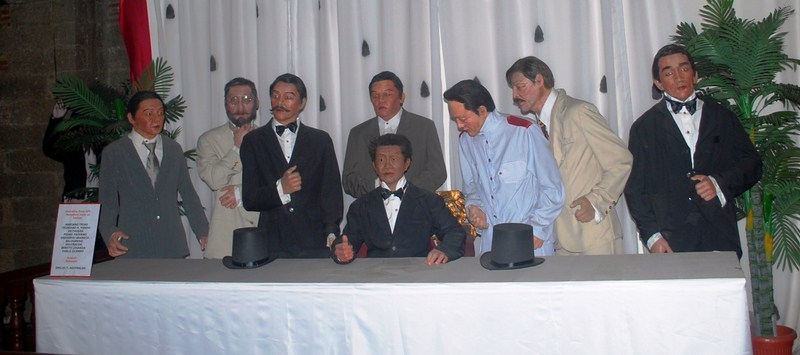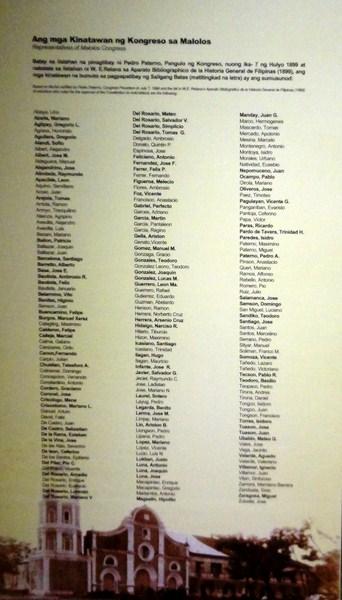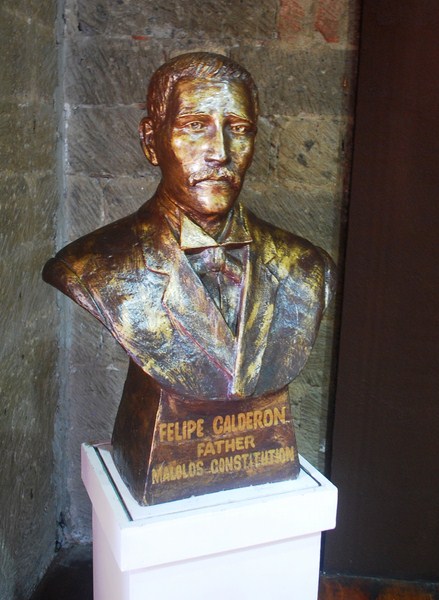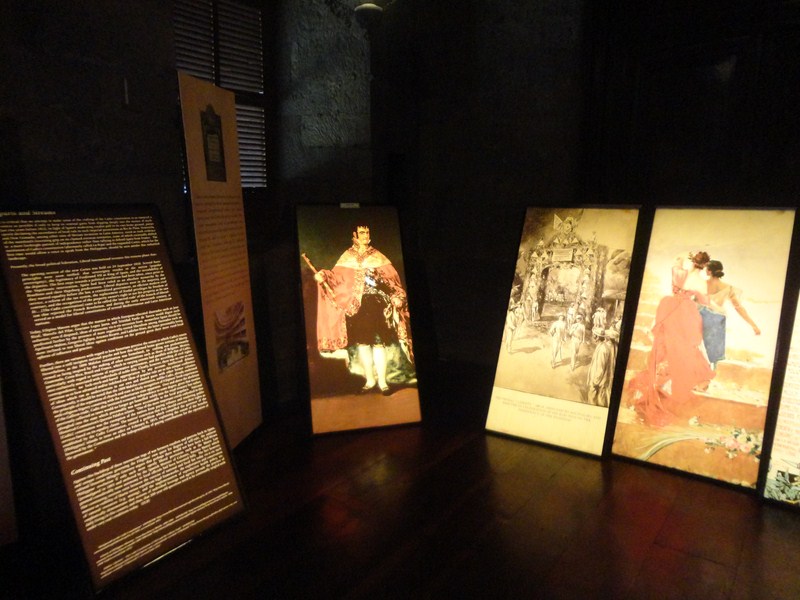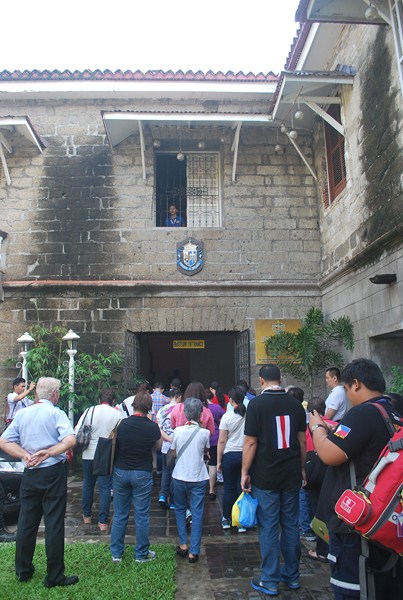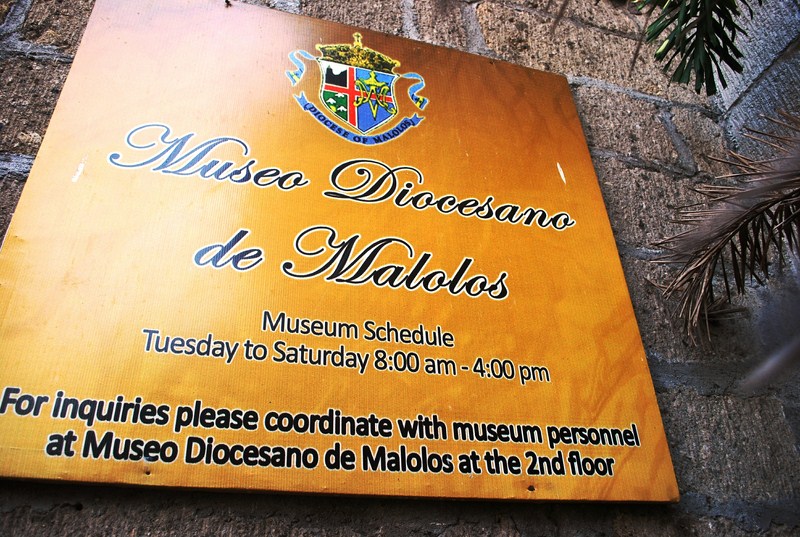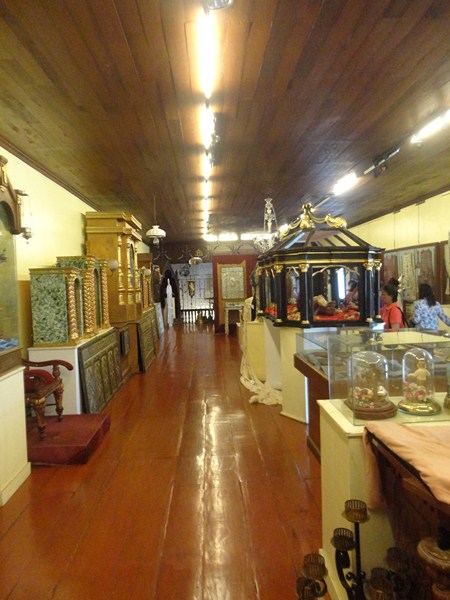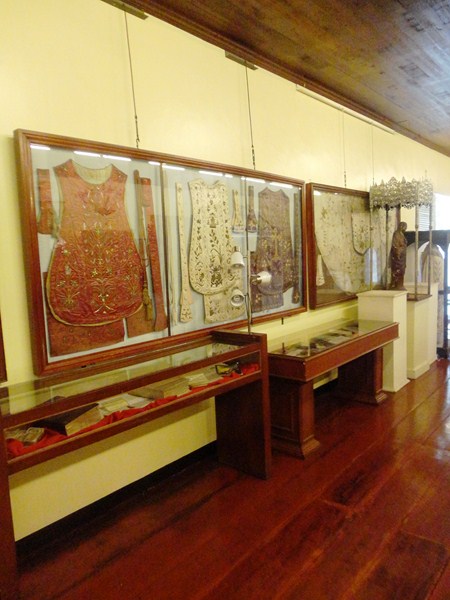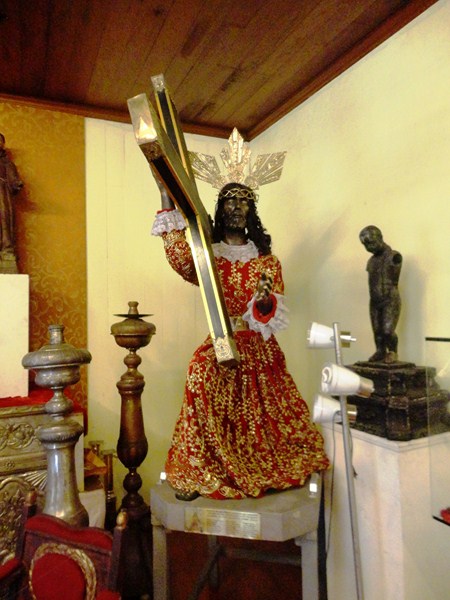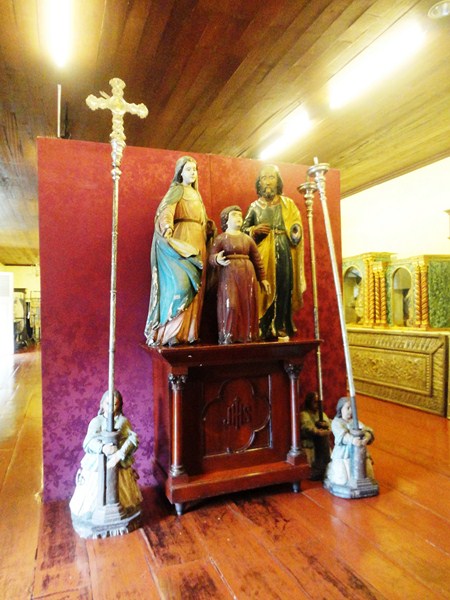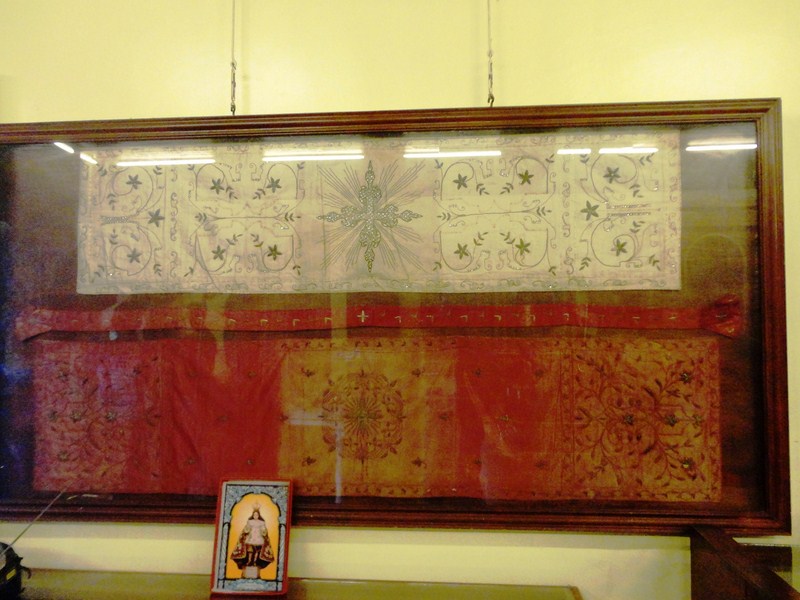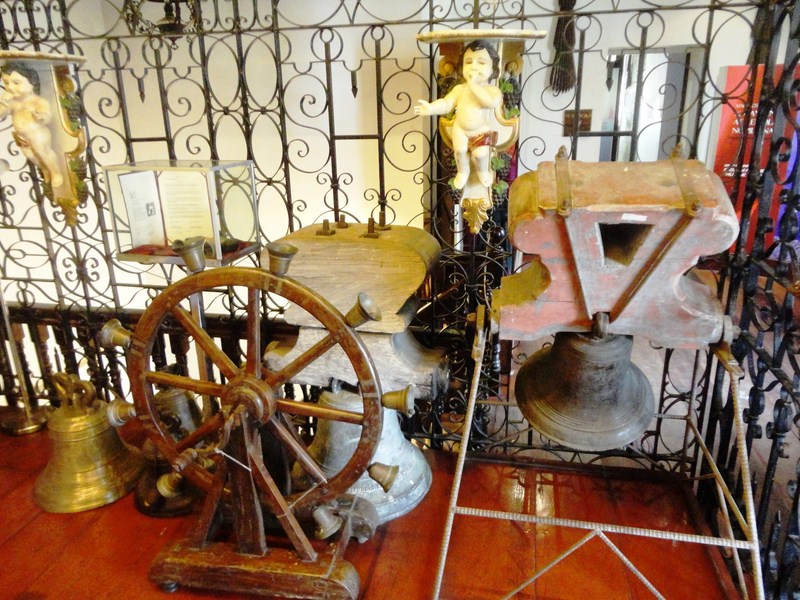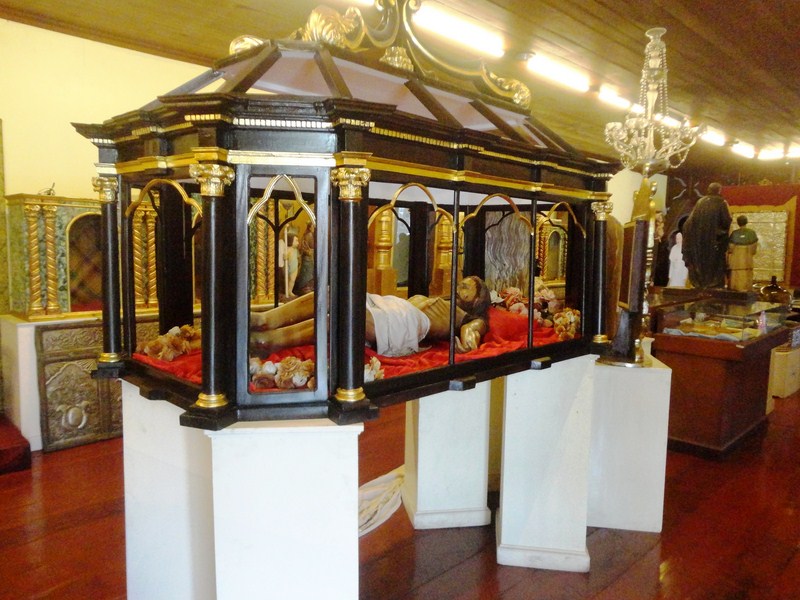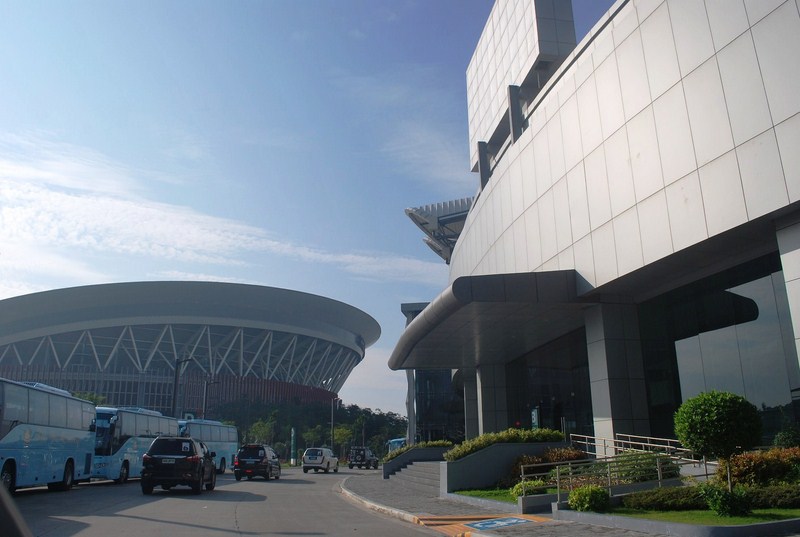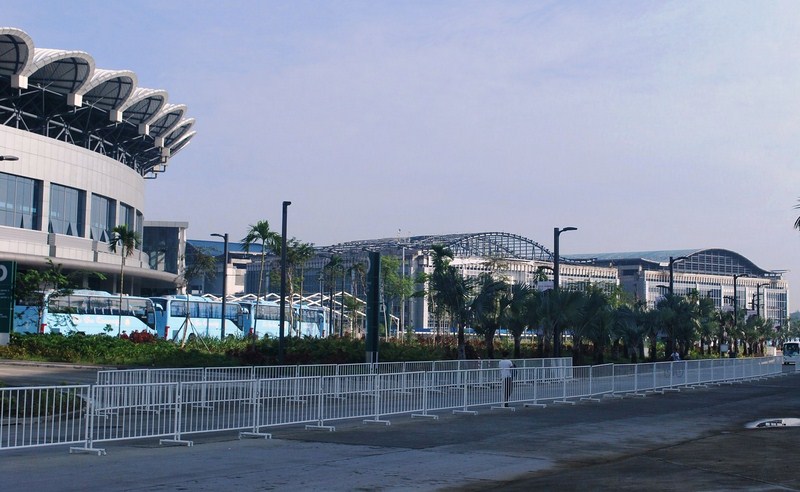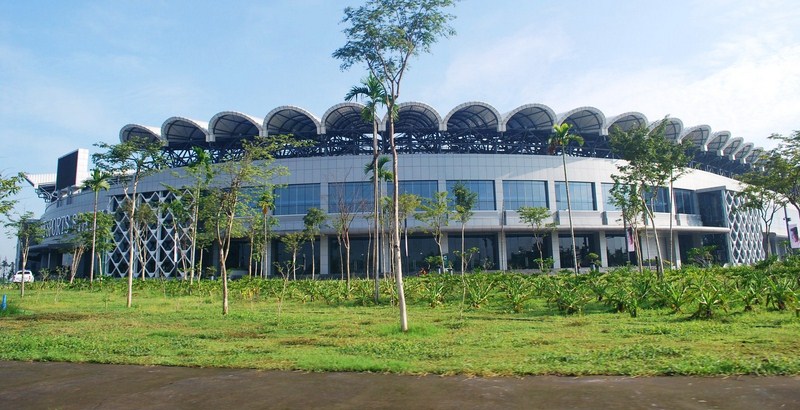After a merienda of bibingka at Orang’s in the town proper, we walked to the nearby Church of St. Catherine of Alexandria. Built by Fr. Mateo Bustillos (parish priest from 1695 to 1697) at its original site in Darigayos (a barrio of Namacpacan), it was transferred to its present site in 1741. In 1829, it was reinforced with masonry and covered with a galvanized iron roof.
The church was severely damaged during the 1854 earthquake, repaired in 1863 and restored by Fr. Marcelino Ceballos. The convent, also damaged during the 1854 earthquake, was also enlarged by Fr. Ceballos in 1876. The church is now listed as a National Cultural Treasure.
Just like other Philippine churches built in earthquake-prone areas, this Earthquake Baroque church has thick muros (walls) of brick and stone and buttresses connected to a brick exterior stairway of different designs and shapes. At the church’s entrance is a capilla possa (ceremonial archway). Its 3-level Baroque-style façade, built in 1872, is painted in an eye-catching white, light blue and pale gray, the official colors of the Image of Our Lady of Namacpacan, the church and the town. Even tricycles are painted in light blue.
The first level has 3 sets of two pairs of engaged columns and 2 sets of single columns while the second level has two sets of Tuscan columns, all with double capitals, plus 6 sets of paired columns at the center. The curved pediment, complemented by semicircular arched openings and blind niches, is reinforced by the heavy architrave.
The twin 3-storey, hexagonal bell towers, flanking the facade, have blind and real fenestrations and is crowned by a pointed Baroque-style, balustered dome. Part of the brick convent ruins is now used as a school (Sta. Catalina Academy). Inside the church is a wooden altar, a Spanish-era stone pulpit and a wood relief of the Baptism of Christ, probably polychromed.
The church interior also enshrines the supposedly miraculous 6-foot 4-inch high (the tallest known image of the Virgin in the country) wooden image of Our Lady of Namacpacan (the original name of the town, it is an Ilocano term meaning “one who feeds), enshrined in the church in 1871. The patroness of travelers and of the town, it is said by experts to be the image of Our Lady of the Cord.
Also called Apo Baket, the image has been credited with many miracles and devotees flock here every year to honor her. On November 24, 1959, by a special decree of Pope John XXIII, Our Lady of Namacpacan was canonically crowned by the high-ranking officials led by Papal Nuncio Salvatore Siino.
In 1871, an Augustinian priest ordered an image of the Virgin Mary from Spain to be brought to the Immaculate Conception Seminary in Vigan, Ilocos Sur in a galleon. However, a typhoon forced the ship and its crew to seek refuge at Darigayos (a barrio then named Namacpacan). When the storm subsided, they tried to resume their voyage, but the high winds forced them to return to the port.
The captain of the ship then decided to bring the statue to the port and then have it carried overland to its original destination. While making preparations, the statue was brought to the convent. The church at that time was undergoing repairs on the damaged portions brought about by a strong earthquake. The following morning, they commenced their trip to Vigan but the natives had some difficulties in carrying the box containing the figure of the Blessed Virgin. So, after several failed attempts, they presumed that the Blessed Virgin has chosen the town of Namacpacan as her haven.
Rev. Fr. Marcelino Ceballos, the parish priest of Namacpacan, negotiated with the Augustinian friar Camilo Naves to let the image stay in Namacpacan. It was agreed upon that the Catholics from Namacpacan would reimburse all expenses incurred. The parishioners contributed joyously and generously to the extent of selling portions of their fields to raise the amount. An altar at the northern portico side of the church was constructed to house the statue of the Blessed Virgin Mary, now Our Lady of Namacpacan.
Later on, many miracles happened. The lame, 13 year old Rosa Roldan, claimed that, one day, an old woman knocked on the door of their home and asked for drink and food. She let her in and gave her some leftover food.
The old woman drank some water and some of it fell on Rosa’s feet. Before she left, she told Rosa to meet her at the shrine and from there, Rosa began to walk. When she came to the shrine, she was surprised to see the figure of the Our Lady of Namacpacan and recognized her as her visitor. Since then, Rosa has become a devotee of the Our Blessed Lady and started healing the sick and offering charity service to those in need.
Today the church is flocked by devotees who are expected to fetch water from a well that is believed to cure diseases. The well was created because of a dream of a “balikbayan” woman, who said that Apo Baket appeared in her dream and told her to dig a well near the church. The woman then asked volunteers to dig a well and some people, after attending the mass, drank water from the well and many professed that they felt stronger. A physically ill man also claimed that the water from the well cured him. Afterwards, the Department of Health (DOH) sent a delegate to investigate the water’s chemical substance and discovered that it is alkaline which is safe for drinking.
Church of St. Catherine of Alexandria: Namacpacan Rd., Luna 2518, La Union.
How to Get There: Luna is located 267.48 kms. from Manila and 34.8 kms. north of the City of San Fernando. Air conditioned buses from Dominion Bus Lines, Philippine Rabbit, Partas, Fariñas, Maria de Leon, and Viron depart from terminals in Manila that is bound for Ilocos. Destinations can either be La Union, Narvacan, Vigan, Laoag or Abra. Just tell the bus attendant that you are going to Luna.
.

